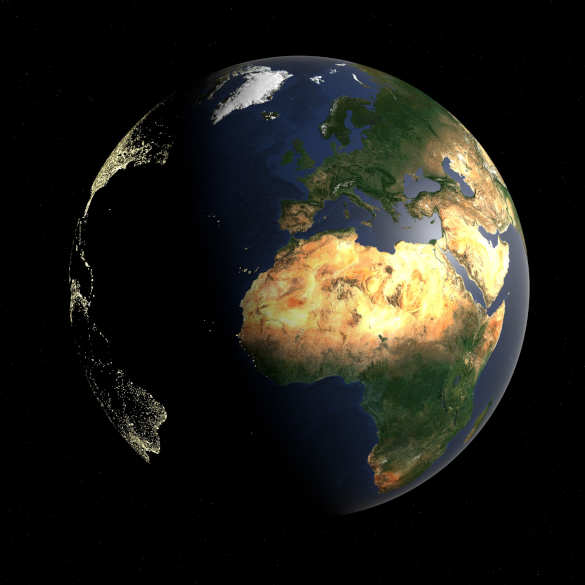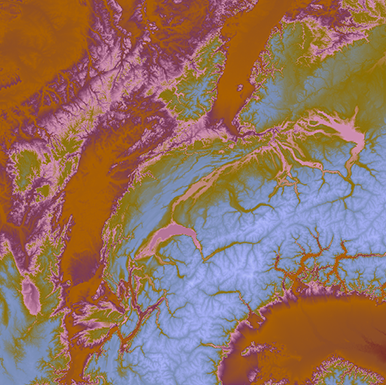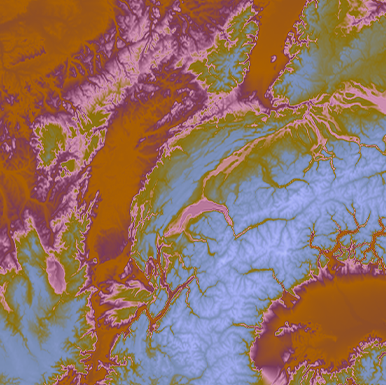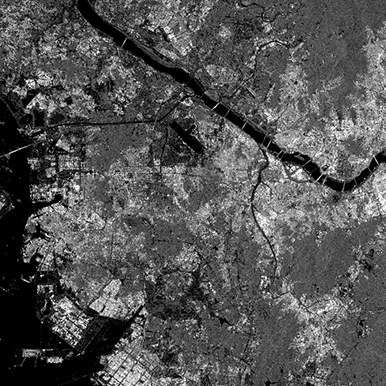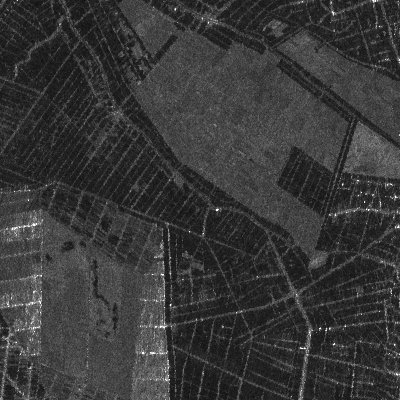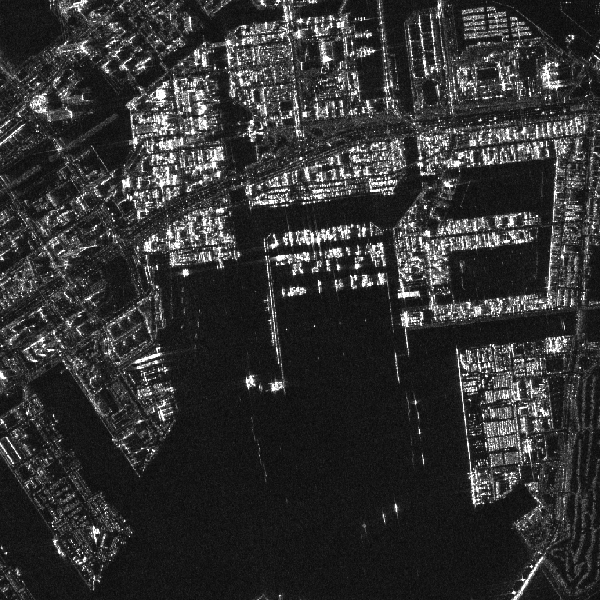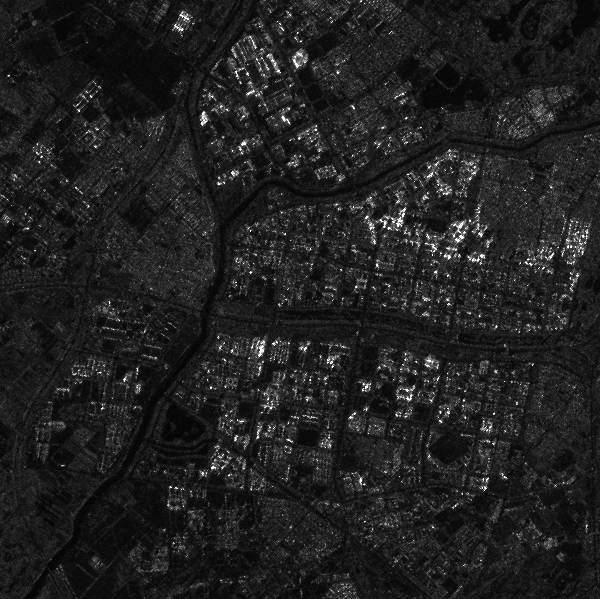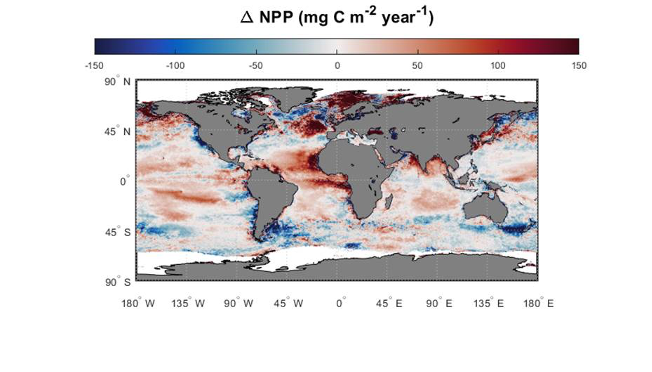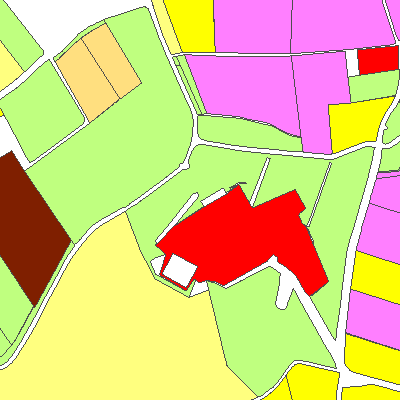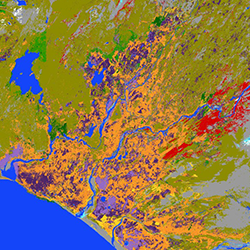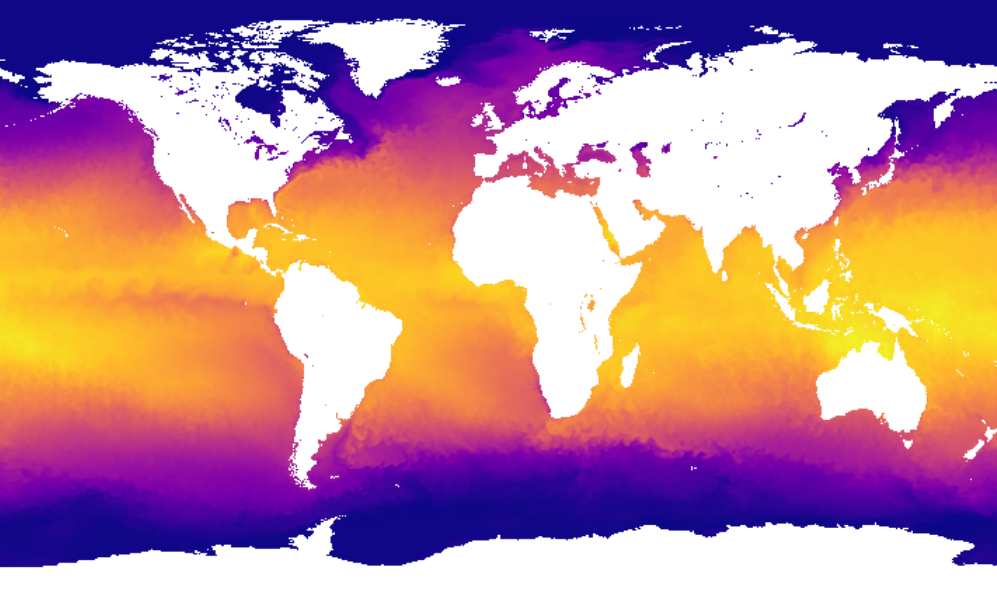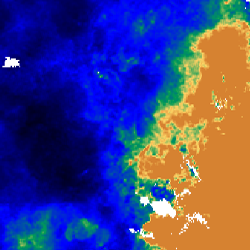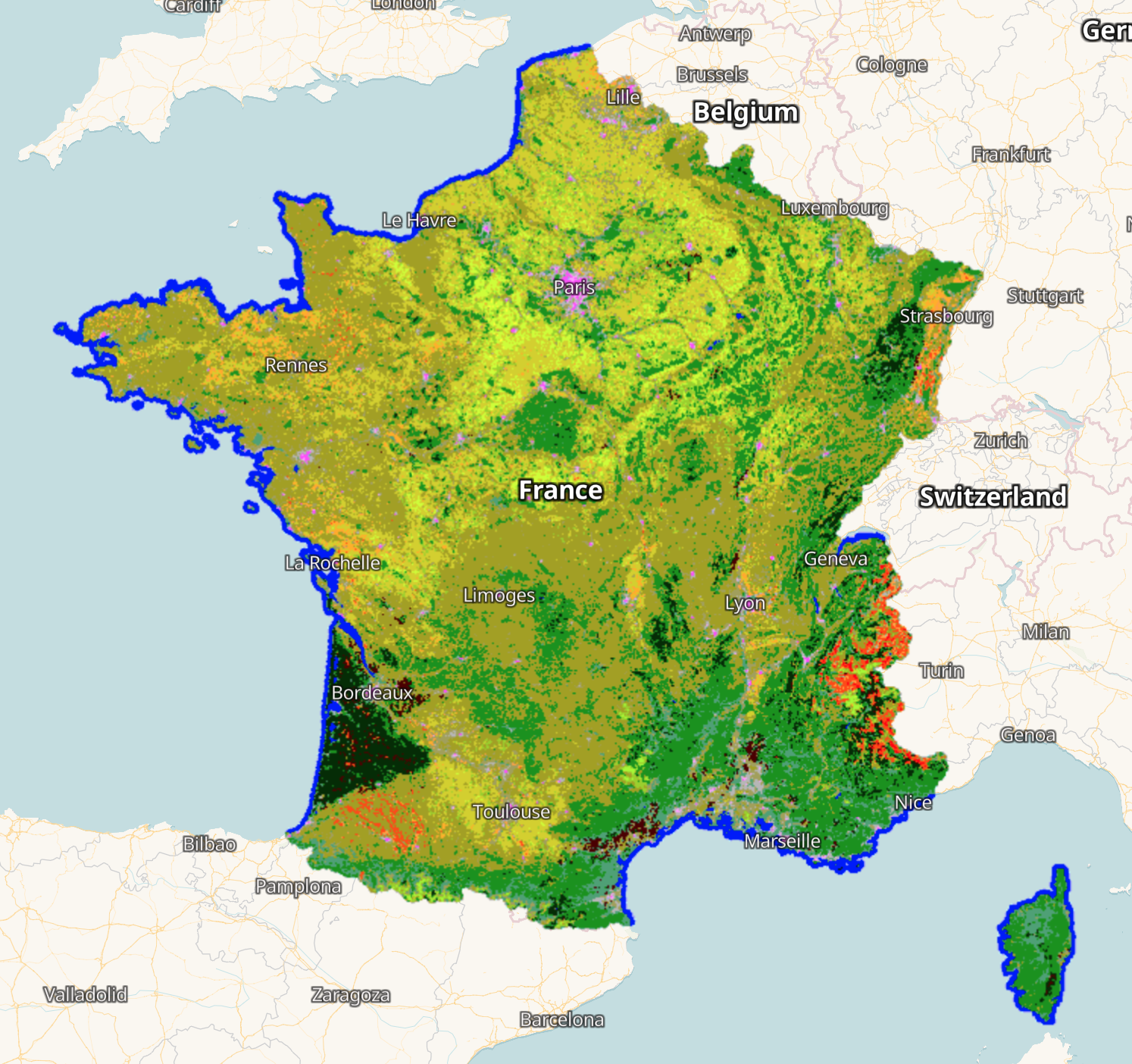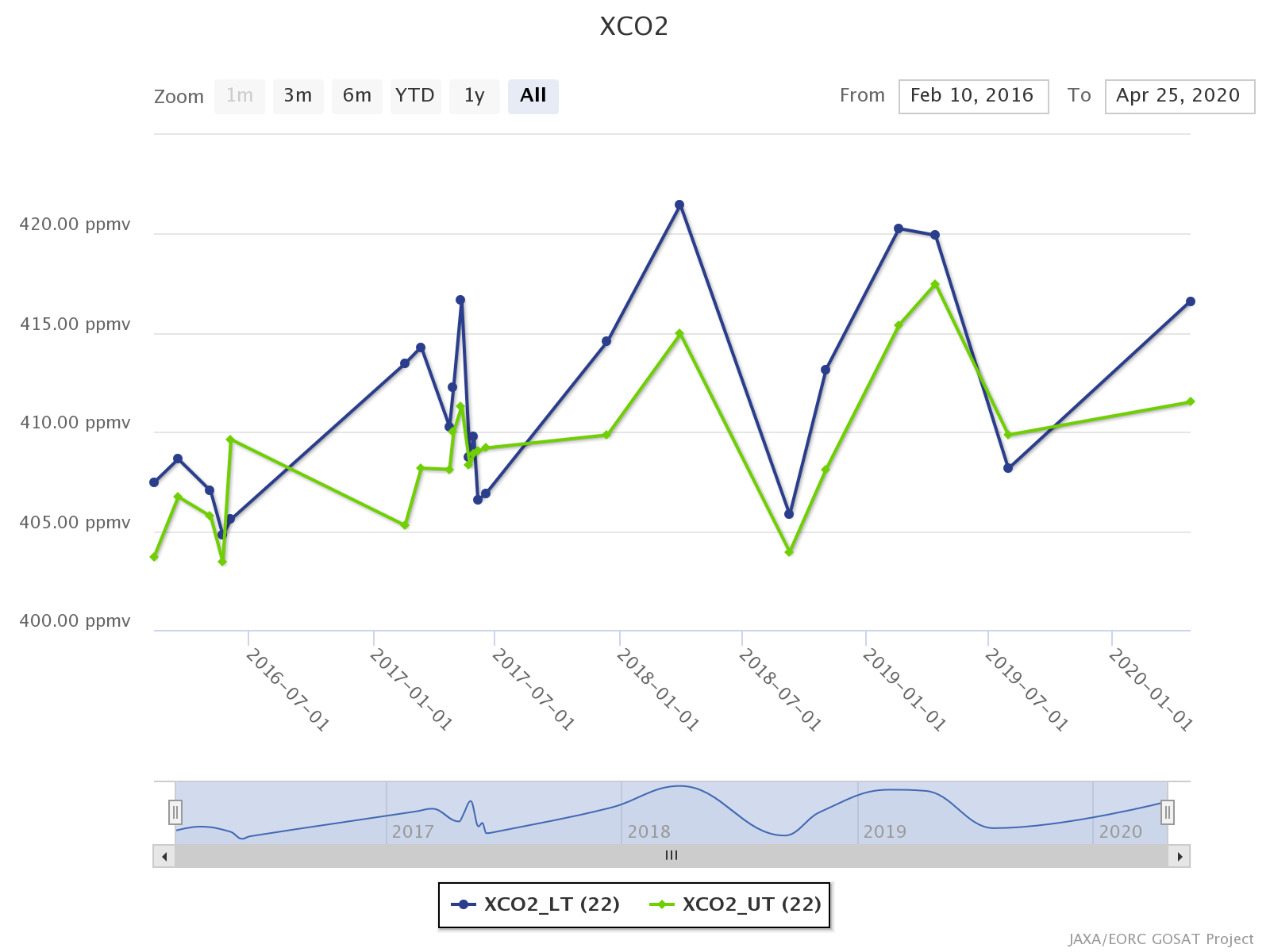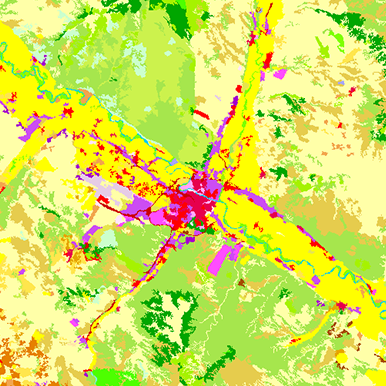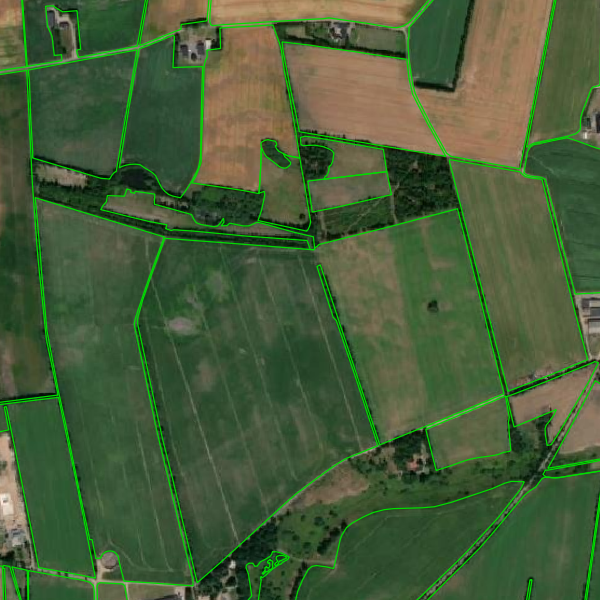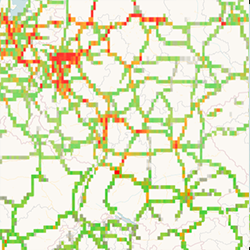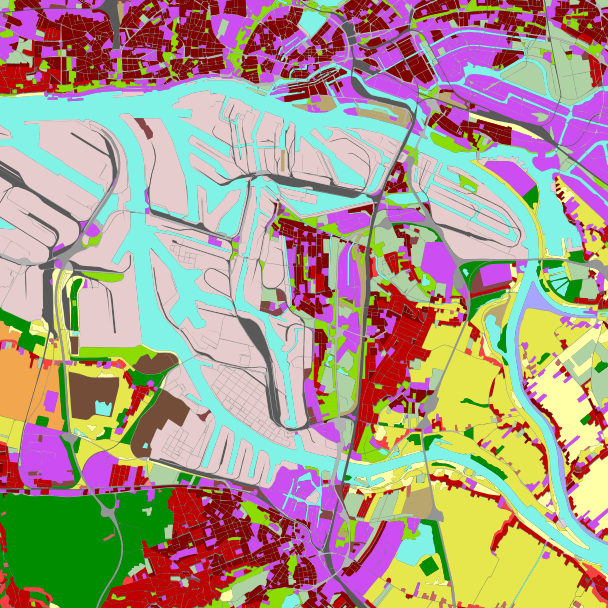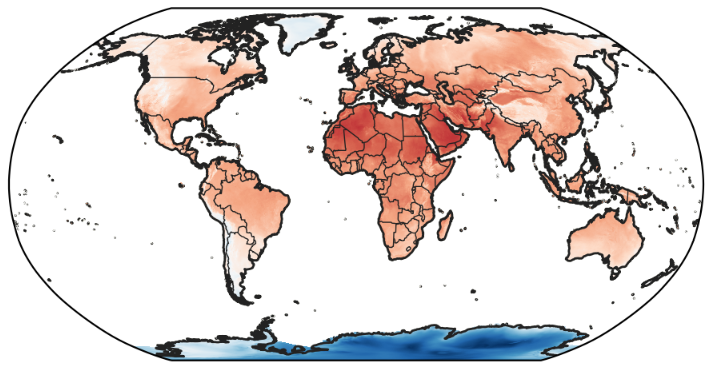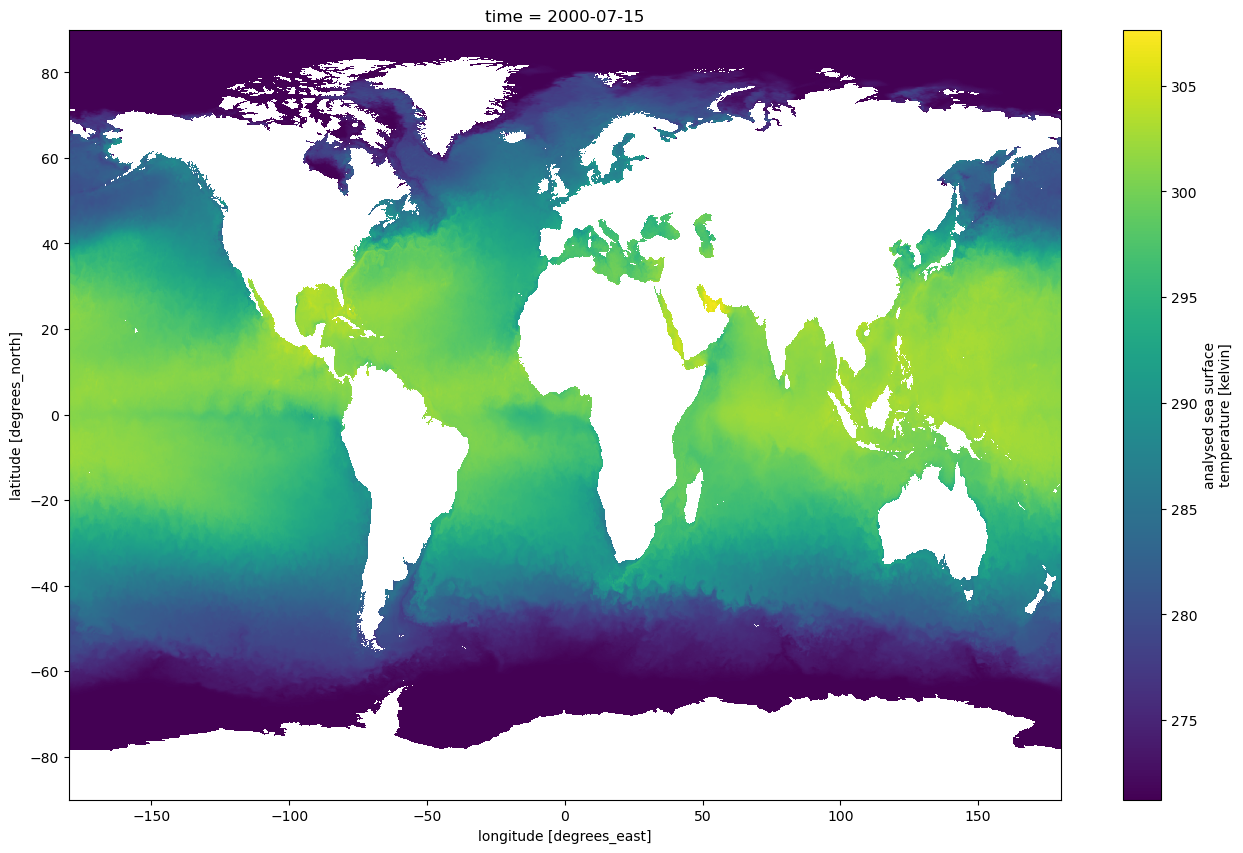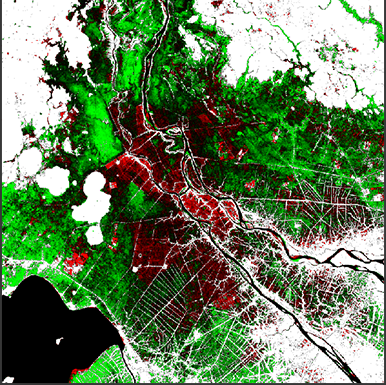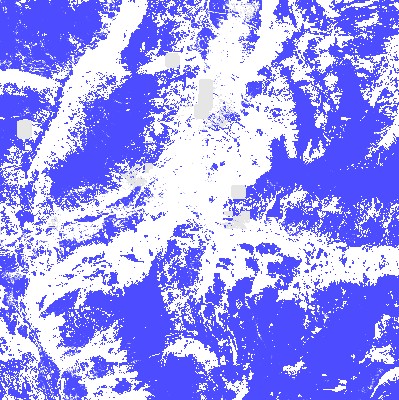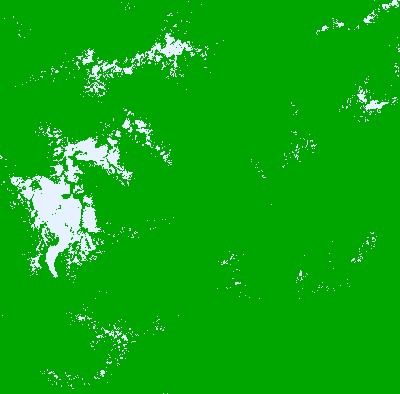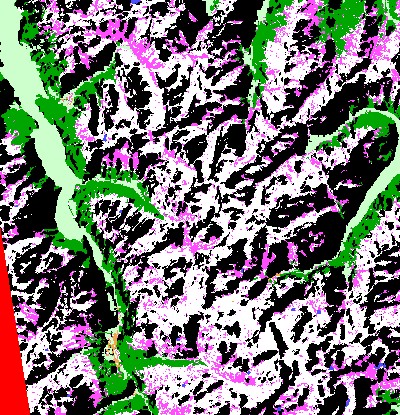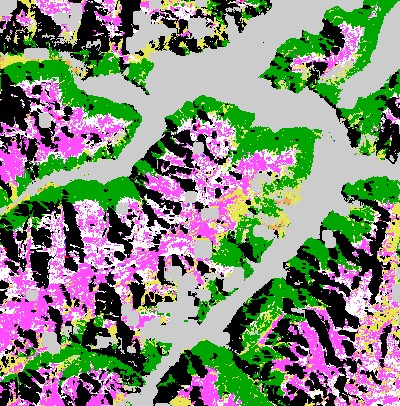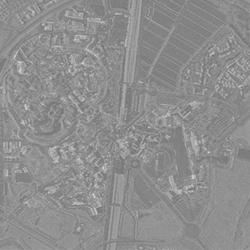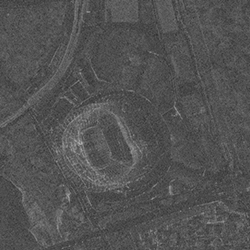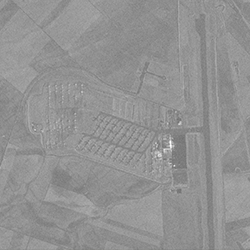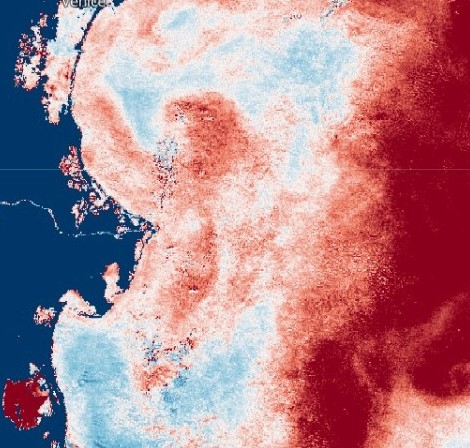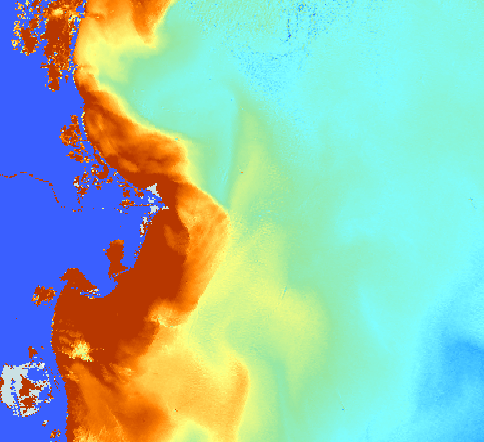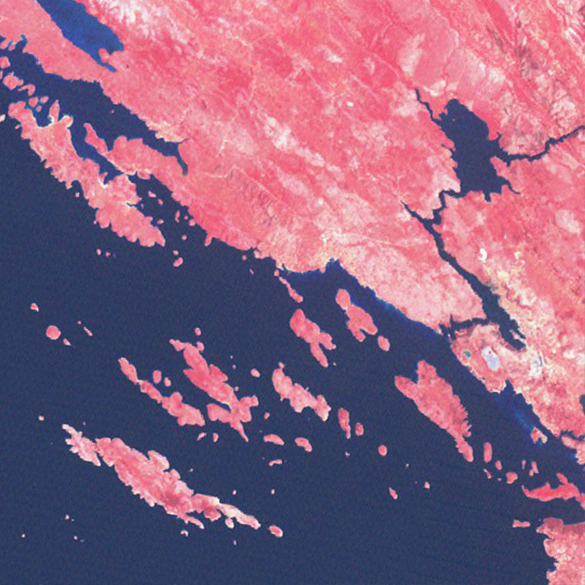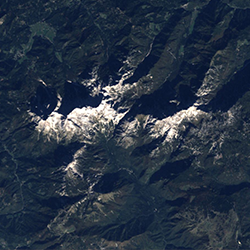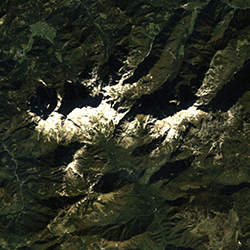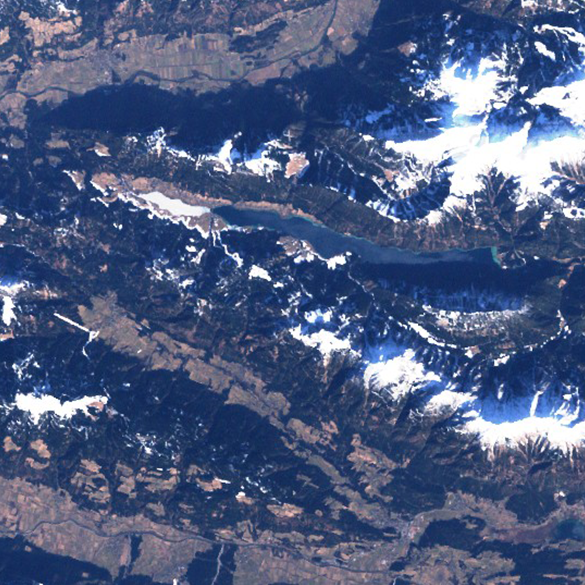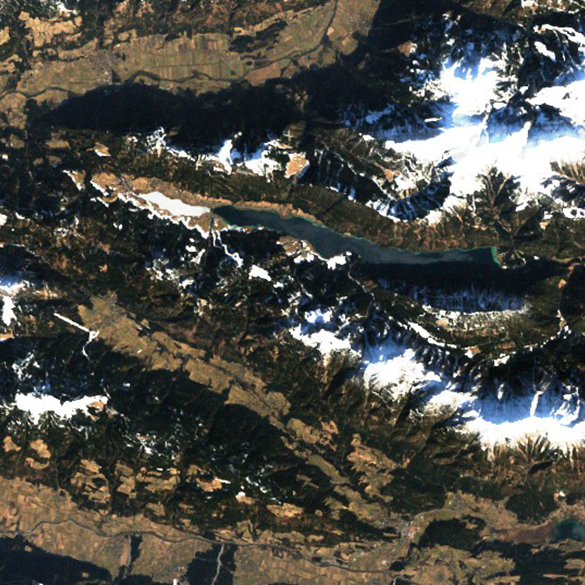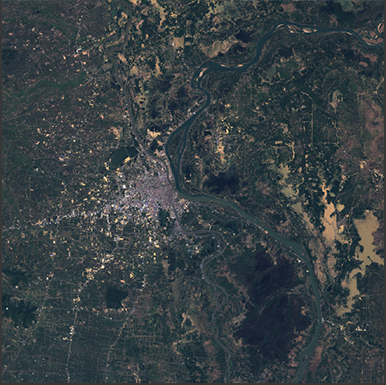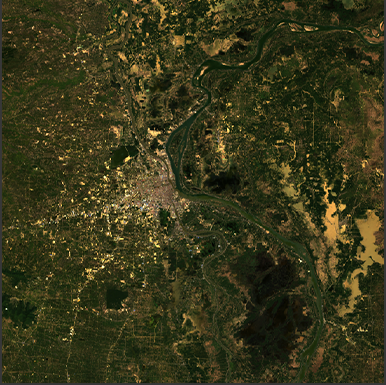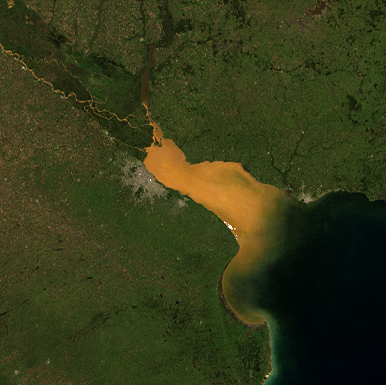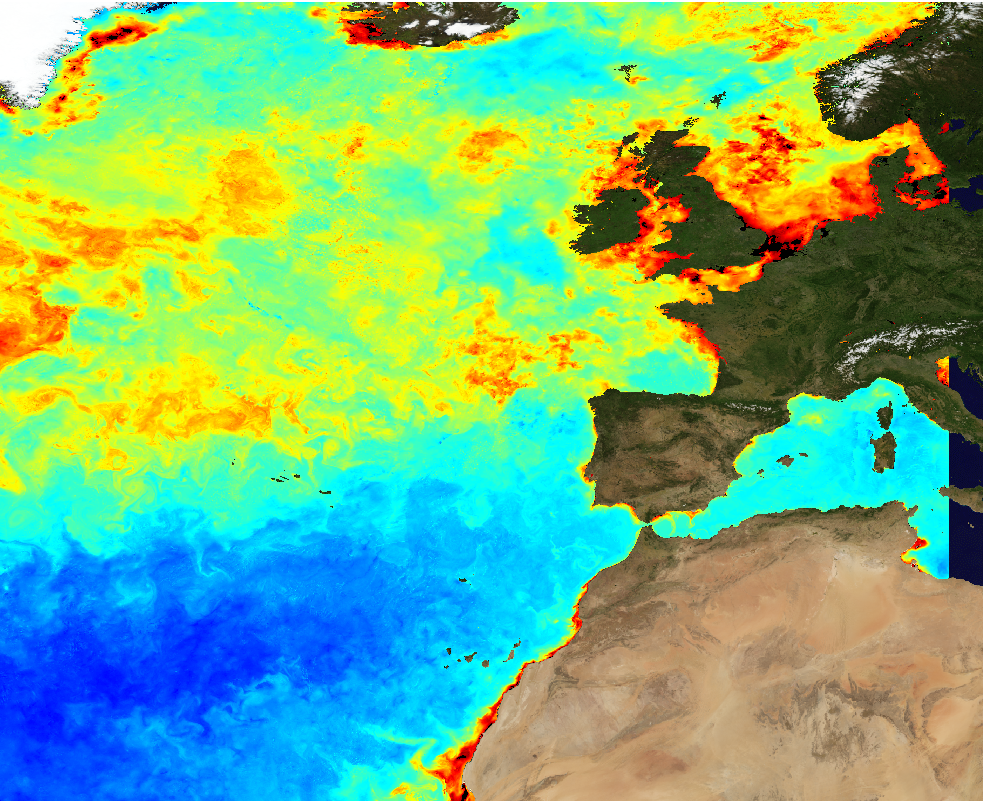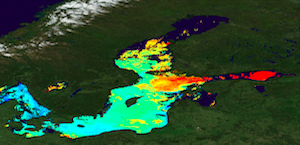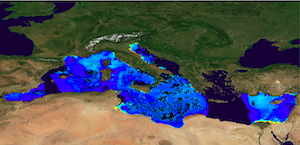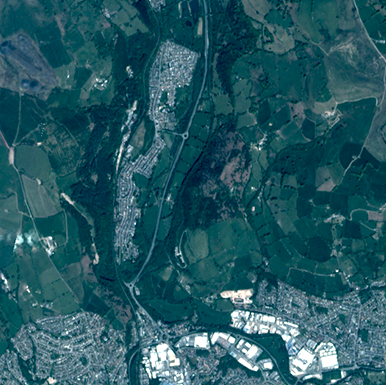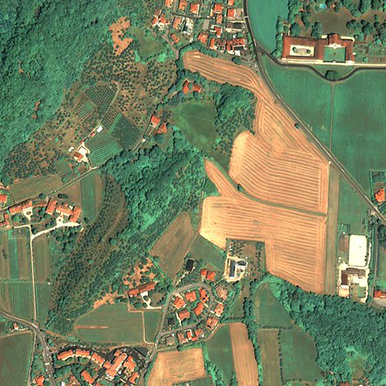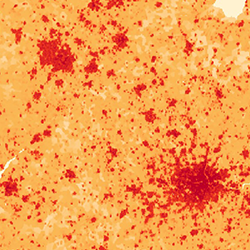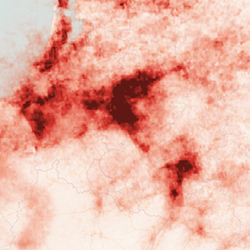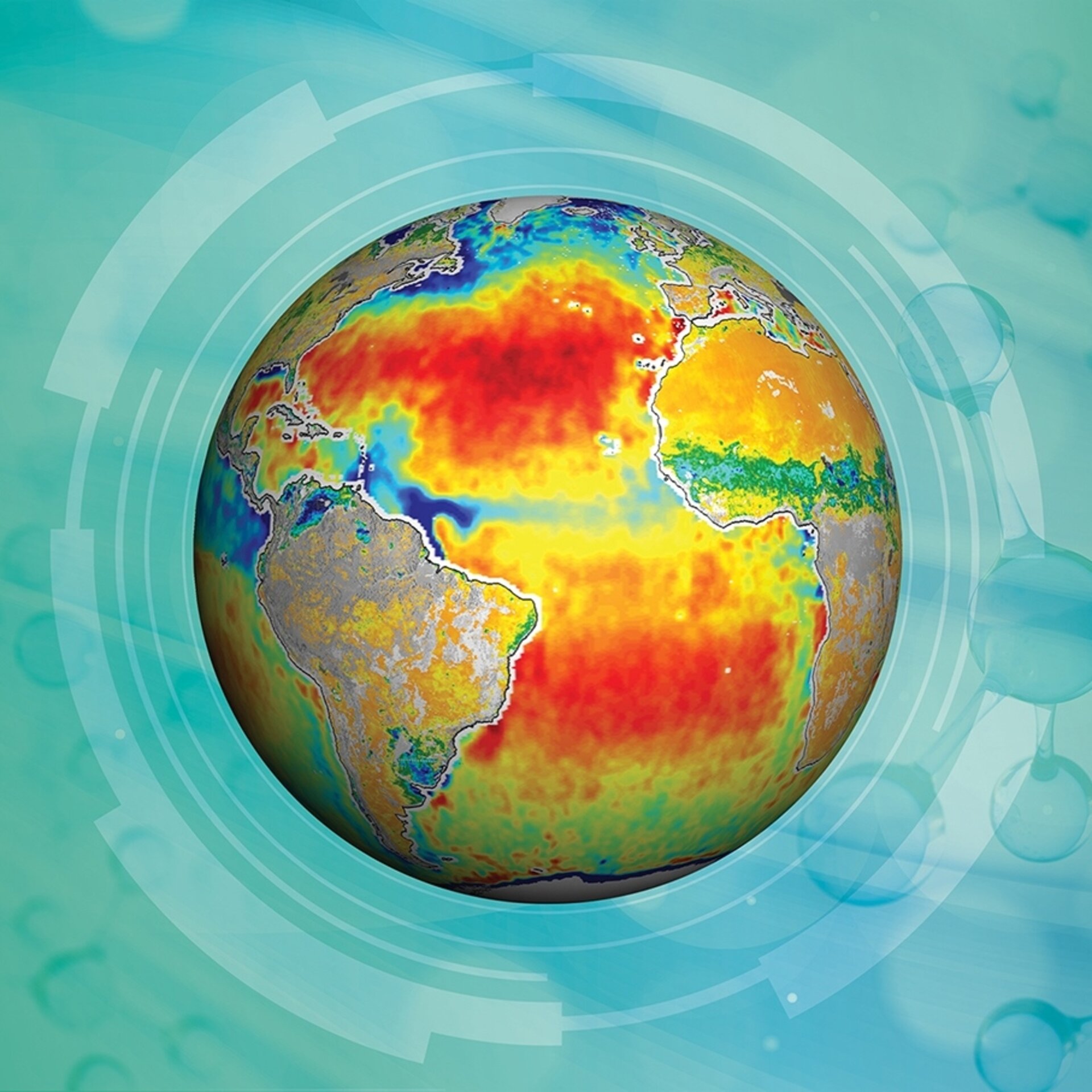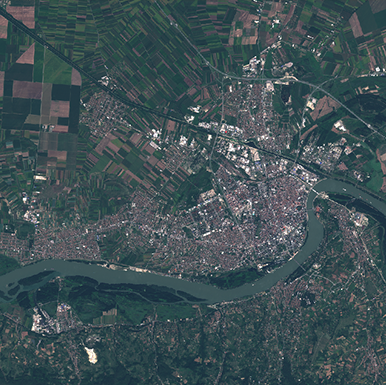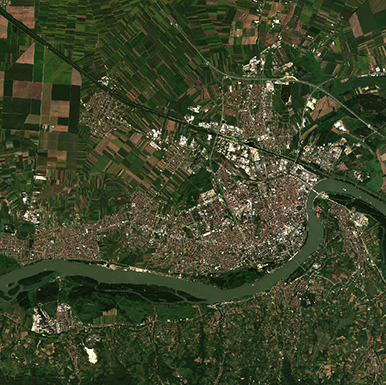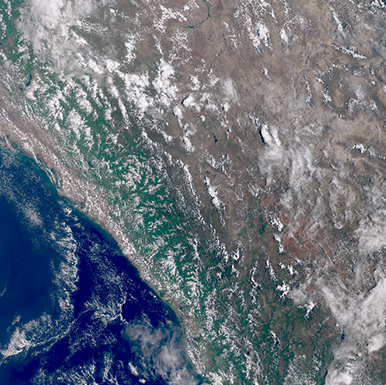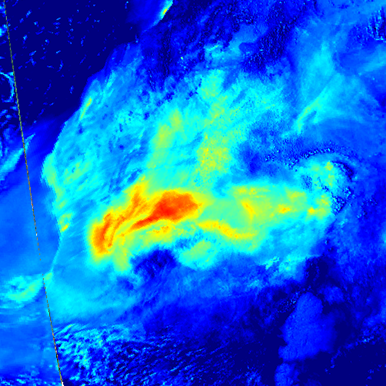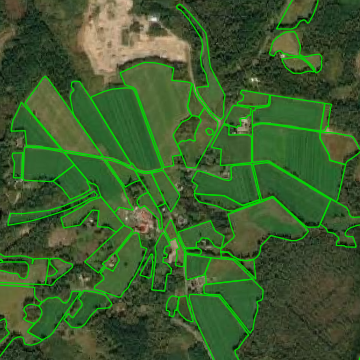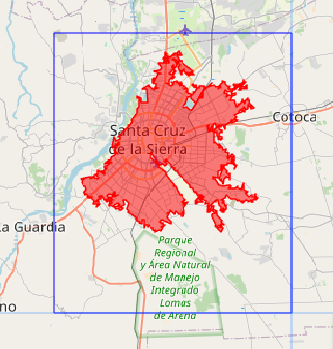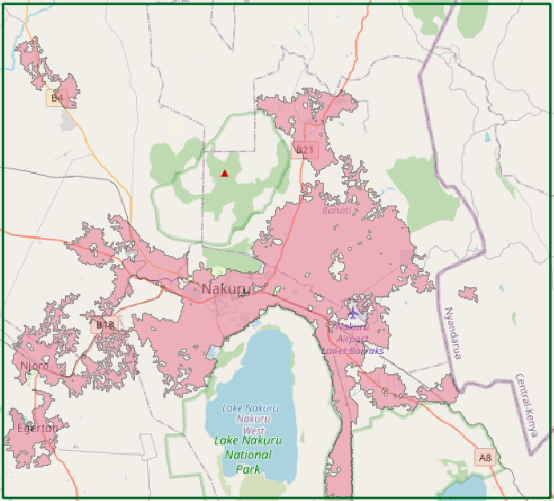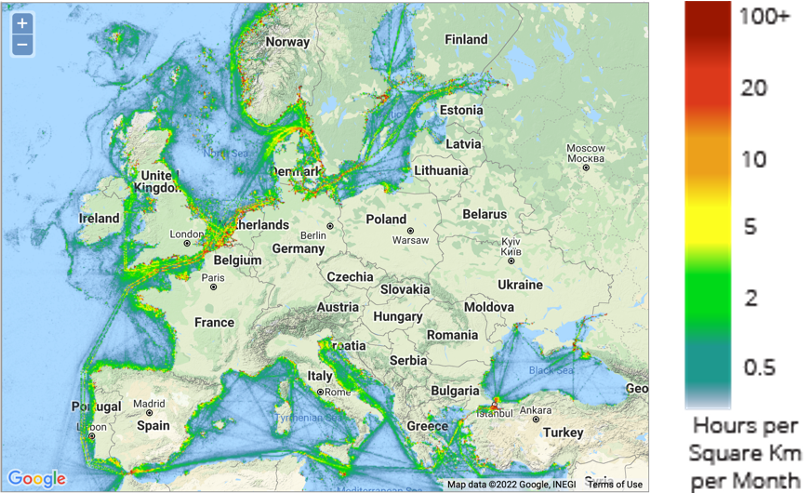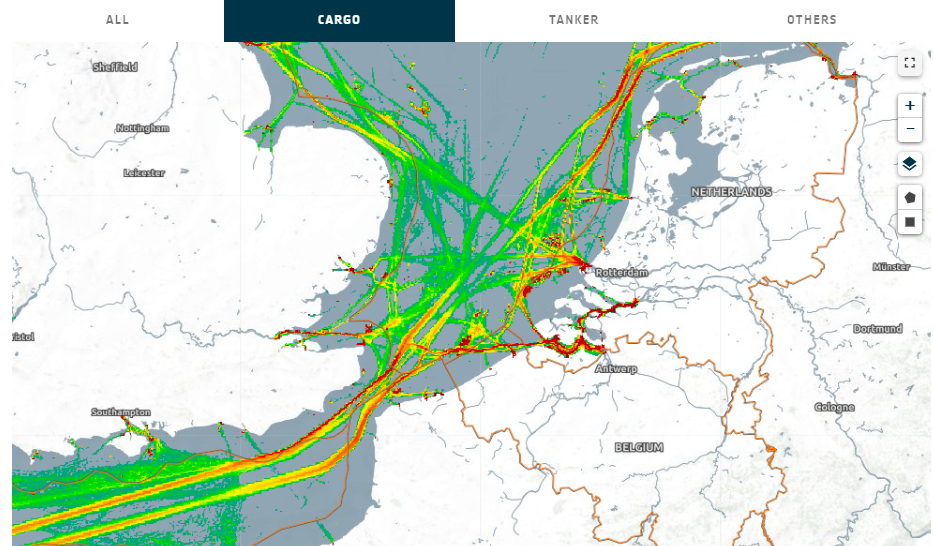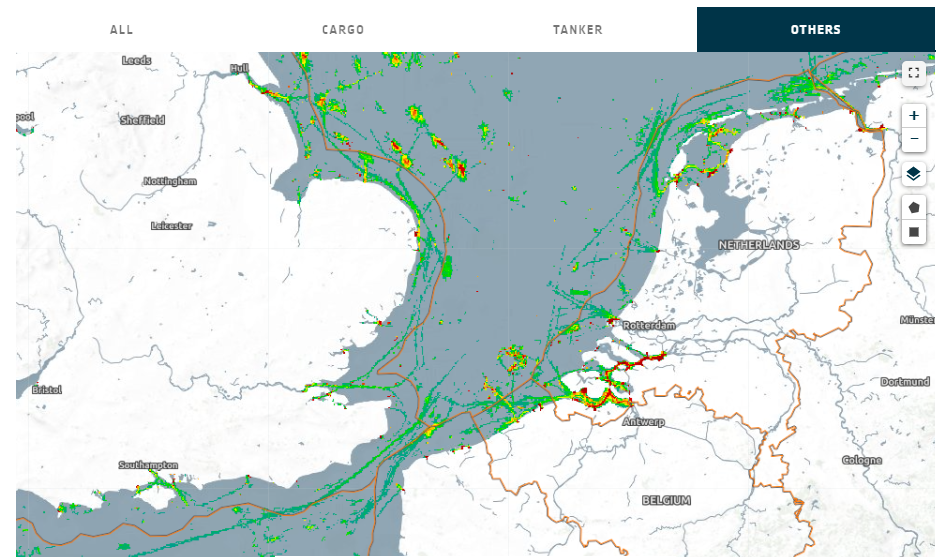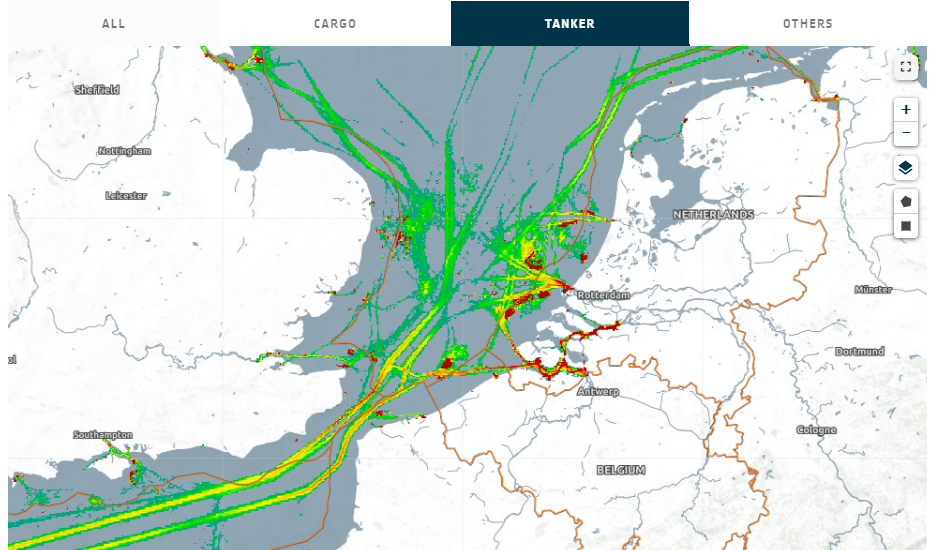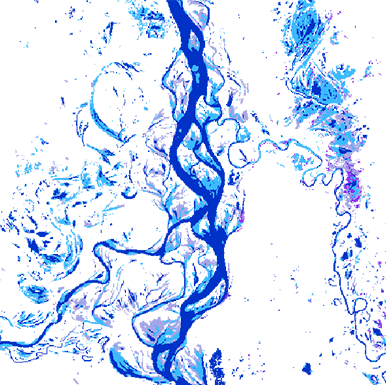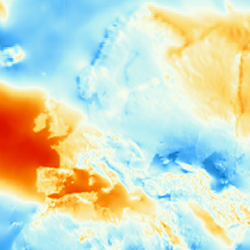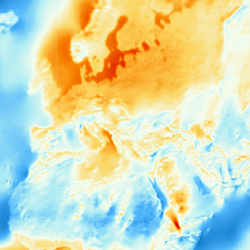About
This registry exists to help people discover and share collections that are available via Euro Data Cube
See all usage examples for collections listed in this registry.
Search collections (currently 13 matching collections)
Add to this registry
If you want to add a collection or example of how to use a collection to this registry, please follow the instructions on the Euro Data Cube Public Collections GitHub repository.
Unless specifically stated in the applicable collection's documentation, collections available through the Euro Data Cube Public Collections are not provided and maintained by Euro Data Cube. Collections are provided and maintained by a variety of third parties under a variety of licenses. Please check collection licenses and related documentation to determine if a collection may be used for your application.
EOxCloudless Sentinel-2 10m Global Cloudless Mosaic
agriculturecloudlesscommercial dataEOXEOxCloudlessglobalmachine learningmapsmulti spectral imageryon-demandrastersatellite imagerysystematic
EOxCloudless Sentinel-2 10m Global Cloudless Mosaic is a derived product, created to provide an almost cloudfree global dataset every year. Details about the EOxCloudless products available at EDC are provided on the Additional info page. For a detailed description of the generally available products please refer to EOxCloudless.
Usage examples
Sentinel-2 L2A 120m Mosaic
agriculturemachine learningmulti spectral imageryopen datarastersatellite imagerysentinelsentinel hubsystematicxcube
Sentinel-2 L2A 120m mosaic is a derived product, which contains best pixel values for 10-daily periods, modelled by removing the cloudy pixels and then performing interpolation among remaining values. As clouds can be missed in the removal process and as there are some parts of the world, which have lengthy cloudy periods, clouds might be remaining in some parts. The actual modelling script is available here.
Usage examples
Cloud to Street - Microsoft Flood Dataset - Sentinel-1
derived datafloodmachine learningmlhub-labelopen dataraster
The Cloud to Street - Microsoft Flood Dataset (C2S-MS Floods) is a dataset of near-coincident Sentinel-1 and Sentinel-2 data paired with water labels from 18 global flood events. These labels are derived products of MODIS sensor on board NASA's Aqua and Terra satellites produced as a part of the study, "Satellite imaging reveals increased proportion of population exposed to floods," Nature (2021), doi: 10.1038/s41586-021-03695-w. In this collection, we keep the water label which represents the maximum observed flood extent during the time period of the event. For a detailed desc...
Usage examples
- Satellite imaging reveals increased proportion of population exposed to floods by Tellman B. et al.
Cloud to Street - Microsoft Flood Dataset - Sentinel-2
derived datafloodmachine learningmlhub-labelopen dataraster
The Cloud to Street - Microsoft Flood Dataset (C2S-MS Floods) is a dataset of near-coincident Sentinel-1 and Sentinel-2 data paired with water labels from 18 global flood events. These labels are derived products of MODIS sensor on board NASA's Aqua and Terra satellites produced as a part of the study, "Satellite imaging reveals increased proportion of population exposed to floods," Nature (2021), doi: 10.1038/s41586-021-03695-w. In this collection, we keep the water label which represents the maximum observed flood extent during the time period of the event and the cloud/cloud ...
Usage examples
- Satellite imaging reveals increased proportion of population exposed to floods by Tellman B. et al.
Copernicus DEM
3DDEMelevationopen datarastersentinel hubsystematicterrainxcube
The Copernicus DEM is a Digital Surface Model (DSM) which represents the bare-Earth surface and all above ground natural and built features. It is based on WorldDEM™ DSM that is derived from TanDEM-X and is infilled on a local basis with the following DEMs: ASTER, SRTM90, SRTM30, SRTM30plus, GMTED2010, TerraSAR-X Radargrammetric DEM, ALOS World 3D-30m. Copernicus Programme provides Copernicus DEM in 3 different instances: COP-DEM EEA-10, COP-DEM GLO-30 and COP-DEM GLO-90 where "COP-DEM GLO-90" tiles and most of the "COP-DEM GLO-30 " tiles are available worldwide with fre...
Usage examples
Crop Types in Central Asia
crop typeground truthmachine learningmlhub-labelopen dataraster
This dataset collection provides crop type dataset for consistent land cover classification in Central Asia. 8,196 samples were collected between 2015 and 2018, 213 in 2011 and 26 in 2008. The data compiles samples for 40 crop types and is dominated by cotton (40%) and wheat, (25%). The data went through validation process using expert knowledge and remote sensing data and relied on transferable, open-source workflows that will assure the consistency of future sampling campaigns. This dataset (crop type information) is essential to understand the spatial distribution of water usage and antici...
Usage examples
- A crop type dataset for consistent land cover classification in Central Asia by Remelgado R. et al.
Ecosystem Map of Hungary
DanubeDataCubederived dataecosystemland covermachine learningopen datarastersentinel hubsystematicxcube
The Ecosystem Map of Hungary shows the distribution, extent and frequency of ecosystem types on national-scale. Although, mapping of agricultural and urban ecosystems was also a goal, the primary target areas of mapping were semi-natural areas. The map is suitable to serve as the basis of all further assessments of Ecosystem Services and green infrastructure. Top-down and bottom-up mapping approaches were combined to execute mapping, relying both on existing and regularly updated thematic databases and remote sensing images. The map was created within the frame of an EU-co-financed project: &...
Usage examples
Mapzen DEM
3DDEMelevationopen datarastersentinel hubsystematicterrainxcube
Mapzen DEM is based on Mapzen's terrain tiles that provide global DEM and bathymetry data. Mapzen terrain tiles is a composite of elevation data of varying resolutions from multiple open data sources including Details →
Usage examples
Sentinel-1 GRD
backscatteringCopernicusdisaster responseland monitoringmaritime monitoringopen datapolarizationrace challengesradarrasterSARsatellite imagerysentinelsentinel hubsystematicxcube
The Sentinel-1 radar imaging mission is composed of a constellation of two polar-orbiting satellites providing continous all-weather, day and night imagery for Land and Maritime Monitoring. C-band synthentic aperture radar imaging has the advantage of operating at wavelenghts that are not obstructed by clouds or lack of illumination and therefore can acquire data during day or night under all weather conditions. With 6 days repeat cycle on the entire world and daily acquistions of sea ice zones and Europe's major shipping routes, Sentinel-1 ensures reliable data availability to support eme...
Usage examples
Western USA Live Fuel Moisture
ground truthmachine learningmlhub-labelopen datarasterwildfire
The Western USA Live Fuel Moisture is a dataset manually collected in the western United States by the United States Forest Service. Live fuel moisture represents the mass of water in live vegetation elements like leaves, needles, and twigs divided by its oven-dried mass in percentage. It is an indicator which can be used for wildfire assessment. This collection has been rasterized from the original vector data (points) at 10 m resolution to be paired with Sentinel-1 and Sentinel-2 imagery.
Usage examples
- SAR-enhanced mapping of live fuel moisture content by Rao K. and Williams A.P. et al.
ALOS-2 PALSAR-2 ScanSAR Reference Rice Paddy Field Map
dashboard hackathonJAXAopen datarasterrice paddySARsentinel hub
This collection contains reference rice paddy field maps derived from ALOS-2 ScanSAR geometrically corrected (orthorectified) data in selected AOIs between 2019 and 2020 for NASA/ESA/JAXA EODashboard Hackathon. The reference map is described in the digital code as 255: rice paddy field, 0: others.
ALOS-2 PALSAR-2 ScanSAR for Agriculture
dashboard hackathonJAXAopen datarasterSARsentinel hub
This ALOS-2 ScanSAR L2.1 product contains geometrically corrected (orthorectified) data in selected AOIs between 2019 and 2020 for NASA/ESA/JAXA EODashboard Hackathon. The PALSAR-2 aboard the ALOS-2 is a Synthetic Aperture Radar (SAR), which emits microwave and receives the reflection from the ground to acquire information. Since it does not need other sources of light such as the sun, SAR has the advantage of providing satellite images during day or night. For transmitting and receiving microwaves PALSAR-2 uses the L-band, which is less affected by clouds and rains. This all-weather obse...
ALOS-2 PALSAR-2 Stripmap for Economy (SM1)
dashboard hackathonJAXAopen datarasterSARsentinel hub
This ALOS-2 PALSAR-2 Strip Map (SM1 with 3m single polarization ) L2.1 product contains geometrically corrected (orthorectified) in selected AOIs between 2019 and 2020 for NASA/ESA/JAXA EODashboard Hackathon. The PALSAR-2 aboard the ALOS-2 is a Synthetic Aperture Radar (SAR), which emits microwave and receives the reflection from the ground to acquire information. Since it does not need other sources of light such as the sun, SAR has the advantage of providing satellite images during day or night. For transmitting and receiving microwaves PALSAR-2 uses the L-band, which is less affected by...
ALOS-2 PALSAR-2 Stripmap for Economy (SM1, SM3)
dashboard hackathonJAXAopen datarasterSARsentinel hub
This ALOS-2 PALSAR-2 Strip Map (SM1 with 3m single/dual polarization or SM3 with 10m dual polarization) L2.1 product contains geometrically corrected (orthorectified) in selected AOIs between 2019 and 2020 for NASA/ESA/JAXA EODashboard Hackathon. The PALSAR-2 aboard the ALOS-2 is a Synthetic Aperture Radar (SAR), which emits microwave and receives the reflection from the ground to acquire information. Since it does not need other sources of light such as the sun, SAR has the advantage of providing satellite images during day or night. For transmitting and receiving microwaves PALSAR-2 uses ...
BICEP
open datarace challengesrastersentinel hub
This dataset contains global, monthly marine phytoplankton primary production products (in mg C m-2 d-1) for the period of 1998 to 2020 at 9 km spatial resolution. Data are provided in ZARR format with monthly averages.
Belgium - Flanders GSAA
agriculturecommercial datageoDBgsaaLandbouwgebruikspercelenmachine learningparcelvector
Flemish Geo-spatial Aid Application (GSAA) data is managed by the Belgium Department of Agriculture and Fisheries. It contains the parcels that are in agricultural use on the deadline for submission of the single application that year. The register also includes pounds, wood edges and agricultural production facilities (stables and similar buildings). The inventory of these parcels takes place annually in the context of the payment of the (co-financed) European agricultural subsidies and the Flemish manure legislation. It can be used for consultation or study of the land use of agricultural...
CAMS_GLC_2017
open datarace challengesrastersentinel hub
The S2GLC 2017 product represents land cover classification of a major portion of the European continent. The classification has been performed using multi-temporal Sentinel-2 data collected during the year 2017 with the methodology developed in the frame of the Sentinel-2 Global Land Cover (S2GLC) project. The S2GLC 2017 dataset is delivered with 10 m spatial resolution with thematic legend composed of 13 land cover classes
CCI Essential Climate Variables
CCIClimateessential climate variablesopen datarasterxcube
ESA's Climate Change Initiative provides Climate Data Records (CDRs) for Essential Climate Variables (ECVs) generated from the long-term global EO archives. As it stands, the programme offers 22 ECVs with 413 datasets and a multiple of single parameters. In EDC, the data can be conveniently accessed via the xcube datastore for CCI Open Data Portal.
CHL_water_quality_Saturday
open datarace challengesrastersentinel hub
Chlorophyll anomaly maps for 3 sites: Lagoon Venice, Marseille and Barcelona regions
CNES Land Cover Map
derived dataland covermachine learningopen datarastersentinel hubsystematic
The CNES Land Cover Map (Occupation des Sols, OSO) produces land classification for Metropolitan France at 10 m spatial resolution based on Sentinel-2 L2A data within the Theia Land Cover CES framework. Maps for 2021, 2020, 2019, and 2018 use a 23-categories nomenclature. For earlier maps in 2017 and 2016, a fully compatible 17-classes nomenclature is employed.
CO 3daily data
open datarace challengesrastersentinel hub
This online platform uses data from the Copernicus Sentinel-5P satellite and shows the averaged carbon monoxide concentrations across the globe — using a 3-day moving average. Using a 3 day average eliminates most data gaps and improves data quality by reducing random noise. Satellite measurements of concentrations of pollutants like Carbon Monoxide, having a life-time in the atmosphere of about 1 month, can be used to monitor trans-boundary movement of air pollution. Carbon monoxide (CO) is a colorless, odorless, and tasteless gas that is toxic to humans as it can disrupt the transport of oxy...
CO2 and CH4 (GOSAT) partial column density
air qualitydashboard hackathonJAXAopen datatime series
Carbon dioxide (CO2) and methane (CH4) partial column density of lower (approximately 0 -4 km) and upper (approximately 4 -12km) troposphere (LT and UT, respectively). Read more about GOSAT here
CORINE Land Cover
CLMScopernicus servicescorinederived dataland covermachine learningopen datarastersentinel hubsystematicxcube
The CORINE Land Cover (CLC) inventory consists of 44 land cover and land use classes derived from a series of satellite missions since it was first established.
CORINE Land Cover Accounting Layers
accountingCLMScopernicus servicescorinederived dataland coveropen data
The CORINE Land Cover (CLC) Accounting Layers are CLC status layers modified for the purpose of consistent statistical analysis in the land cover change accounting system at EEA. The modification combines CLC status and change layers in the 100m raster in order to create homogeneous quality time series of CLC / CLC-change layers for accounting purposes. The CLC inventory consists of 44 land cover and land use classes derived from a series of satellite missions since it was first established. There are altogether 5 mapping inventories implemented since 1986, producing five status layers (CLC1...
Denmark GSAA
agricultureCAPcommercial datageoDBgsaaland usemachine learningmarkervector
Danish Geo-spatial Aid Application (GSAA) data collection is managed by the Danish Agency for Agriculture. The data is made available for download on the agency’s website. Additionally, the metadata are made available and can be searched on Geodata-info.dk which is managed by the Danish Agency for Data Supply and Efficiency. This collection is comprised of agricultural fields ("Marker") which are an extract of fields notified to the Danish Agency for Agriculture from the most recent application year. A field is defined as a contiguous area on which one crop is grown. Denmark GSAA...
Denmark LPIS
agriculturecommercial datageoDBlanduselpismachine learningmarkblokkevector
Danish Land Parcel Identification System (LPIS) data collection or (field blocks/ 'Markblokke') is managed by The Danish Agency for Agriculture. The data is made available for download on the agency’s website. Additionally, the metadata are made available and can be searched on Geodata-info.dk geoportal with the search term ‘Markblokke’. The field blocks are comprised of polygons representing the country's agricultural areas. The polygons are manually created by the agency annually based on most recent orthophotos. LPIS collection contains attributes for geographical area, elig...
E12C_Motorway
open datarace challengesrastersentinel hub
This indicator is based on the detection of moving trucks on motorways in the EU. The detection uses data from the Copernicus Sentinel-2 satellite.
E12D_Primary_corrected
open datarace challengesrastersentinel hub
This indicator is based on the detection of moving trucks on motorways in the EU. The detection uses data from the Copernicus Sentinel-2 satellite.
E8 indicator
backscatter signalCopernicusCOVID-19 effectse8metal objectsmotor vehicle manufacturingon-demandrace challengesradarSARsentinel hub
The indicator E8 measures COVID-19 lockdown effects on output inventory level at finished goods production sites. To contain COVID-19 pandemic, EU Member States have taken a restricitve measures. According to EUROSTAT, these imposed measures had in general a negative effect on demand and thus on industrial production in many areas.At the logistic areas operated at the production sites such as motor vehicle manufacturing, the large number of metal objects (e.g. machinery, vehicles) produces a strong signature in the radar backscatter signal. The observations provided by the Synthetic Aperture Radar satellites such as the C-band Copernicus Sentinel-1 or the X-band Iceye satellites permit comparative measurements between 2019 and 2020 of the average backscatter signal at the output logistic areas.The output of the indicator E8 algorithm is a CSV file containing statistics of Sentinel-1 backscatter signal for selected aoi and time period.To generate the indicator E8 data, navigate to EDC Browser, select t...
EEA Urban Atlas 2018
CLMScopernicus servicesFUAgeoDBland coverland useLULCmachine learningopen dataurban atlasvector
The Urban Atlas provides harmonised very high resolution pan-European land cover and land use data generated for cities and sorroundings according to the Functional Urban Areas (FUA). The FUAs are distributed among EU, EFTA, West Balkans, UK and Turkey. Urban Atlas is available for 2006, 2012 and 2018. Urban Atlas 2018 covers 788 FUAs and is available publicly for use in geoDB database.
ERA5 2m Temperature 2020 Monthly Average
C3Scopernicus servicesopen datarace challengesrastersentinel hub
Gridded ERA5 is the fifth generation ECMWF reanalysis for the global climate and weather for the past 4 to 7 decades. This parameter is the 2m temperature monthly average
ERA5-Land monthly averaged data
C3Sclimatecopernicus servicesdroughtera5-landfloodforecastingopen datarasterreanalysisxcube
The European Centre for Medium-Range Weather Forecasts (ECMWF) produces ERA5-Land dataset within the frame of Copernicus Climate Change Service. ERA5-Land is a replay of the land component of the ERA5 climate reanalysis with a finer native resolution of 9km compared to 31km in ERA5 and an improved computational efficiency. The data in the Climate Data Store (CDS) has been regridded to a regular lat-lon grid of 0.1x0.1 degrees. ERA5-Land dataset describes the evolution of the water and energy cycles over land in a consistent manner over the production period. By combining model data and obser...
ESA WorldCover
agriculturebiodiversityderived dataland coveropen dataworldcover
The European Space Agency (ESA) WorldCover is a global land cover map with 11 different land cover classes produced at 10m resolution based on combination of both Sentinel-1 and Sentinel-2 data. In areas where Sentinel-2 images are covered by clouds for an extended period of time, Sentinel-1 data then provides complimentary information on the structural characteristics of the observed land cover. Therefore, the combination of Sentinel-1 and Sentinel-2 data makes it possible to update the land cover map almost in real time. WorldCover Map was first produced for 2020 using v100 of the algorit...
Earth System Data Cube v2.1.1
Earth System Data Cubeopen datarastersystematicxcube
Earth System Data Cube v2.1.1 is a result of the project Earth System Data Lab, which is now continued as Deep Earth System Data Lab (DeepESDL). It contains relevant variables for Earth System Science, mostly derived from Earth Observation, but the compilation also includes model or re-analysis data. There are two resolutions available and for each resolution a differently chunked version.The DeepESDL project is very grateful to all data owners for kindly providing the data sets free of charge. They come without any warranty, neither from the owners, the DeepESDL team or ESA.
EuroCrops
agriculturegeoDBland usemachine learningopen datavector
EuroCrops is a dataset collection combining all publicly available self-declared crop reporting datasets from countries of the European Union. The project is funded by the German Space Agency at DLR on behalf of the Federal Ministry for Economic Affairs and Climate Action (BMWK). This work is licensed under a Creative Commons Attribution 4.0 International License.
Field Delineation
derived datafield delineationon-demandsentinel hubsentinel-2
An algorithm for automatic delineation of agricultural field boundaries from Sentinel-2 imagery.The main part of the algorithm is an advanced pre-trained machine learning model. It was trained on multiple locations throughout Europe for a time interval from March to August.The algorithm is an improved version of the one developed for NIVA project. More information about the process is available in a blog post and in a recording of a webinar.To run the field delineation process, navigate to EDC Browser, select the required input parameters and follow the check-out wizard to complete your order...
France Metropolitan GSAA
agricultureCAPcommercial datageoDBgsaamachine learningRegistre parcellaire graphiquevector
The Graphical Parcel Register (Registre parcellaire graphique (RPG) is a geographical database allowing the identification of agricultural parcels. Its primary purpose is to provide a spatial reference for aid applications under the Common Agricultural Policy (CAP). The anonymised version of RPG with information on the main crop on the agricultural parcel is publicly available. RGP is managed by the Service and Payment Agency (ASP).France Metropolitan GSAA data collection is made available on geoDB on subscription basis.
Global Human Settlement Layer - GHS-BUILT-S2
derived datamachine learningopen datarastersentinel huburban mapping
The Global Human Settlement (GHS) framework produces global maps of built-up, population density and settlements to monitor human presence on Earth over time. The Global Human Settlement Layer GHS-BUILT-S2 is a global map of built-up areas (expressed as probabilities) at 10 m spatial resolution. It was derived from a Sentinel-2 global image composite for the reference year 2018 using Convolutional Neural Networks.
Global Land Cover
CLMScopernicus servicesderived dataland covermachine learningopen datarastersentinel hubsystematicxcube
Global Land Cover products at 100 m resolution are delivered annually by the global component of the Copernicus Land Service. The most recent collection 3 (version 3.0.1) of 100 m Land Cover products for the years 2015 - 2019 were generated from the PROBA-V 100 m and 300 m satellite observations and several other ancillary datasets with global coverage. These Land Cover products provide a main discrete land cover classification map according to UN-FAO Land Cover Classification System LCCS. Additional continuous fractional layers for all basic land cover classes which give the percentage o...
Global Surface Water
climate changederived datainland wateropen datarastersentinel hubsurface watersystematicwater bodiesxcube
The Global Surface Water dataset was developed by the European Commission's Joint Research Centre within the framework of the Copernicus Programme. It is derived from Landsat imagery and and shows different aspects of the spatio-temporal distribution of surface water between 1984 and 2021 at the global scale.
Harmonized Landsat Sentinel
agriculturecopernicusdisaster responselandsatLULC changeLULC mappingmulti spectral imagerynatural resourceopen datarace challengesrastersatellite imagerysentinelsentinel hubsystematicvegetation monitoringxcube
Harmonized Landsat Sentinel is a NASA initiative to produce a Virtual Constellation of surface reflectance (SR) data from the Operational Land Manager (OLI) and Multi-Spectral Instrument (MSI) aboard the Landsat 8-9 and Sentinel-2 remote sensing satellites, respectively. The combined measurement enables global observations of the land every 2-3 days. Input products are Landsat 8-9 Collection 2 L1 and S2-L1C top-of-atmosphere reflectance. Landsat data is available from April 2013 and Sentinel-2 data from November 2015.
High-Resolution Snow & Ice Monitoring; Daily cumulative Gap-filled Fractional Snow Cover
CLMSderived datahrsiopen datasnow
The High-Resolution Snow & Ice Monitoring service (HR-S&I) is part of the Copernicus Land Monitoring Service (CLMS). The snow aspect of the service provides products measuring Snow cover (FSC, FSTOC, FSCOG, GFSC), Snow state conditions (WDS, SWS) and persistent snow area (PSA). There are also ice products that measure ice cover (RLIE) and aggregated river and lake ice extent (ARLIE).More information about the data can be found here and the snow products user manual is located here. The daily cumulative Gap-filled Fractional Snow Cover (GFSC) product is a more complete version of the ...
High-Resolution Snow & Ice Monitoring; Fractional Snow Cover
CLMSderived datahrsiopen datasnow
The High-Resolution Snow & Ice Monitoring service (HR-S&I) is part of the Copernicus Land Monitoring Service (CLMS). The snow aspect of the service provides products measuring Snow cover (FSC, FSTOC, FSCOG, GFSC), Snow state conditions (WDS, SWS) and persistent snow area (PSA). There are also ice products that measure ice cover (RLIE) and aggregated river and lake ice extent (ARLIE).More information about the data can be found here and the snow products user manual is located here. The Fractional Snow Cover (FSC) product provides the snow fraction at the Top Of Canopy (FSCTOC) and On...
High-Resolution Snow & Ice Monitoring; Persistent Snow Area
CLMSderived datahrsiopen datasnow
The High-Resolution Snow & Ice Monitoring service (HR-S&I) is part of the Copernicus Land Monitoring Service (CLMS). The snow aspect of the service provides products measuring Snow cover (FSC, FSTOC, FSCOG, GFSC), Snow state conditions (WDS, SWS) and persistent snow area (PSA). There are also ice products that measure ice cover (RLIE) and aggregated river and lake ice extent (ARLIE).More information about the data can be found here and the snow products user manual is located here. The Persistent Snow Area (PSA) product is generated annually from FSC products and provides the extent ...
High-Resolution Snow & Ice Monitoring; River and Lake Ice Extent - Sentinel 1
CLMSderived datahrsiicelakeopen datariverwater
The River and Lake Ice Extent - Sentinel 1 (RLIE S1) product is part of the Copernicus Land Monitoring Service (CLMS), pan-European High Resolution Snow and Ice Monitoring (HR-S&I) Ice product suite.The River and Lake Ice Extent (RLIE) products measure the presence of ice in rivers and lakes described by the EU-HYDRO network database, in particular the area of snow-free or snow-covered ice. The RLIE S1 product is released in near real time for the entire EEA39 zone based on the revisit time of the Sentinel 1 syntetic aperture radar constellation, and it is generated at a spatial resoluti...
High-Resolution Snow & Ice Monitoring; River and Lake Ice Extent - Sentinel 2
CLMSderived datahrsiicelakeopen datariverwater
The River and Lake Ice Extent - Sentinel 2 (RLIE S2) product is part of the Copernicus Land Monitoring Service (CLMS), pan-European High Resolution Snow and Ice Monitoring (HR-S&I) Ice product suite.The River and Lake Ice Extent (RLIE) products measure the presence of ice in rivers and lakes described by the EU-HYDRO network database, in particular the area of snow-free or snow-covered ice. The RLIE S2 product is released in near real time for the entire EEA39 zone based on the revisit time of the Sentinel 2 constellation, and it is generated at a spatial resolution of 20 m x 20 m. Beca...
High-Resolution Snow & Ice Monitoring; River and Lake Ice Extent S1+S2
CLMSderived datahrsiicelakeopen datariverwater
The River and Lake Ice Extent S1+S2 (RLIE S1+S2) product is part of the Copernicus Land Monitoring Service (CLMS), pan-European High Resolution Snow and Ice Monitoring (HR-S&I) Ice product suite.The River and Lake Ice Extent (RLIE) products measure the presence of ice in rivers and lakes described by the EU-HYDRO network database, in particular the area of snow-free or snow-covered ice. The RLIE S1+S2 product is computed from the combination of RLIE S1 and RLIE S2 products.The RLIE S2 product from a given day is gap-filled using the RLIE S1 information from the same day. Because the RLIE...
High-Resolution Snow & Ice Monitoring; SAR Wet Snow in high mountains
CLMSderived datahrsiopen datasnow
The High-Resolution Snow & Ice Monitoring service (HR-S&I) is part of the Copernicus Land Monitoring Service (CLMS). The snow aspect of the service provides products measuring Snow cover (FSC, FSTOC, FSCOG, GFSC), Snow state conditions (WDS, SWS) and persistent snow area (PSA). There are also ice products that measure ice cover (RLIE) and aggregated river and lake ice extent (ARLIE).More information about the data can be found here and the snow products user manua...
High-Resolution Snow & Ice Monitoring; Wet / Dry Snow - Snow state classification
CLMSderived datahrsiopen datasnow
The High-Resolution Snow & Ice Monitoring service (HR-S&I) is part of the Copernicus Land Monitoring Service (CLMS). The snow aspect of the service provides products measuring Snow cover (FSC, FSTOC, FSCOG, GFSC), Snow state conditions (WDS, SWS) and persistent snow area (PSA). There are also ice products that measure ice cover (RLIE) and aggregated river and lake ice extent (ARLIE).More information about the data can be found here and the snow products user manual is located here. The Wet/Dry Snow (WDS) product differentiates the snow state conditions within the snow mask defined by...
ICEYE_E11
open datarace challengesrastersentinel hub
Activity for Leisure industry reduced. Images from ICEYE
ICEYE_E11a
open datarace challengesrastersentinel hub
Activity at leisure facility (Stadium) affected by COVID
ICEYE_E3
open datarace challengesrastersentinel hub
Oil storages filling up as demand for oil decreases when people are not travelling
JAXA's Public-health Monitor and Analysis Platform (JPMAP)
dashboard hackathonhealthJAXAopen data
This is in cooperation with research institutes including universities and international organizations.EORC developed a user-friendly web-based system, JAXA's (Japan Aerospace Exploration Agency) Public-health Monitor and Analysis Platform (JPMAP), which distributes satellite-derived environmental information, such as rainfall, shortwave radiation, soil moisture, normalized difference vegetation index (NDVI), aerosol optical thickness (AOT), land surface temperature (LST), and altitude. The system was designed for users to download the data and utilize it without any additional data pro...
JAXA_wq_chla_anomaly
dashboard hackathonJAXAopen datarastersentinel hubwater quality
Water quality Chlorophyll-a weekly anomaly.
It is the ratio (percentage) of weekly chlorophyll-a concentration divided by average concentration of other years for 4 sites: North Adriatic, Tokyo, Kobe and Nagoya.
Anomaly[%]=((DN-1)/254*(300-(-100))-100).
The base data is made by averaging within -1, 0, +1 weeks in 2018-2020.
File naming convention:
jx_chla_tif_XXX_yyyy_mm_dd.tif
XXX: Area name
nas -> NAdriatic
tok -> Tokyo
kob -> Kobe
nag -> Nagoya
yyyy:Year
mm:Month
dd:DayJAXA_wq_chla_average
dashboard hackathonGCOM-CJAXAopen datarastersentinel hubwater quality
Chlorophyll-a concentration weekly average (GCOM-C). Weekly average chlorophyll-a concentration for 4 sites: North Adriatic, Tokyo, Kobe and Nagoya. chl[mg/m^3]=10.^(DN/254*(log10(60)-log10(0.03))+log10(0.03))
File naming convention: jx_chla-ave_tif_XXX_yyyy_mm_dd.tif
XXX: Area name
nas -> NAdriatic
tok -> Tokyo
kob -> Kobe
nag -> Nagoya
yyyy:Year
mm:Month
dd:DayJAXA_wq_tsm_anomaly
dashboard hackathonJAXAopen datarastersentinel hubwater quality
Ratio (percentage) of weekly total suspended matter concentration divided by average concentration of other years for 4 sites: North Adriatic, Tokyo, Kobe and Nagoya.
Anomaly[%]=((DN-1)/254*(300-(-100))-100).
The base data is made by averaging within -1, 0, +1 weeks in 2018-2020.
File naming convention: jx_tsm_tif_XXX_yyyy_mm_dd.tif
XXX: Area name
nas -> NAdriatic
tok -> Tokyo
kob -> Kobe
nag -> Nagoya
yyyy:Year
mm:Month
dd:DayJAXA_wq_tsm_average
dashboard hackathonGCOM-CJAXAopen datarastersentinel hubwater quality
Total suspended matter cocentration weekly average (GCOM-C). Weekly total suspended matter concentration for 4 sites: North Adriatic, Tokyo, Kobe and Nagoya. TSM[g/m^3]=10.^(DN/254*(log10(50)-log10(0.01))+log10(0.01))
File naming convention: jx_tsm-ave_tif_XXX_yyyy_mm_dd.tif
XXX: Area name
nas -> NAdriatic
tok -> Tokyo
kob -> Kobe
nag -> Nagoya
yyyy:Year
mm:Month
dd:DayLake Water Quality 300m
CLMScopernicus serviceslakeopen datarastersentinel-3 olcisystematictrophic state indexturbiditywaterxcube
The Lake Water Quality NRT 300m product provides optical observations of global inland water bodies (nominally 4200) that are either medium and large sized lakes according to Global Lakes and Wetlands Database or most strategic for monitoring. The product consists of three water quality parameters: (1) turbidity, which is a key indicator of water clarity, quantifying the haziness of the water and acting as an indicator of underwater light availability.(2) trophic state index, an indicator of productivity of a lake in terms of phytoplankton and is used for monitoring eutrophication status of ...
Landsat 1-5 MSS L1
landsatLULC changeLULC mappingnatural resourceopen datarastersatellite imagerysentinel hubsystematicvegetation monitoringxcube
The Landsat Multispectral Scanner System (MSS) sensors were carried onboard Landsats 1 to 5. It provides 4 spectral bands. See USGS EROS Archive for more information. MSS Level-1 data provides Top of Atmosphere Reflectance products for the period from July 1972 to October 1992 and from June 2012 to January 2013.
Landsat 4-5 TM L1
landsatLULC changeLULC mappingnatural resourceopen datarastersatellite imagerysentinel hubsurface temperaturesystematicvegetation monitoringxcube
The Landsat Thematic Mapper (TM) sensor was carried onboard Landsats 4 and 5. TM collected data in 7 spectral bands; from the blue, green, red, near-infrared, mid-infrared (2) and thermal infrared portions of the electromagnetic spectrum. Visit USGS EROS Archive - Landsat Archives - Landsat 4-5 Thematic Mapper Collection 2 Level-1 Data webpage for more information.
Landsat 4-5 TM L2
landsatLULC changeLULC mappingnatural resourceopen datarastersatellite imagerysentinel hubsurface temperaturesystematicvegetation monitoringxcube
The Landsat Thematic Mapper (TM) sensor was carried onboard Landsats 4 and 5. TM collected data in 7 spectral bands; from the blue, green, red, near-infrared, mid-infrared(2) and thermal infrared portions of the electromagnetic spectrum. L2 data include Surface Reflectance and Surface Temperature scene-based products. Visit USGS EROS Archive - Landsat Archives - Landsat 4-5 TM Collection 2 Level-2 Science Products for more information.
Landsat 7 ETM+ L1
landsatLULC changeLULC mappingnatural resourceopen datarastersatellite imagerysentinel hubsurface temperaturesystematicvegetation monitoringxcube
The Landsat 7 Enhanced Thematic Mapper (ETM+) sensor is carried onboard Landsat 7. ETM+ provides 7 spectral bands and 1 thermal band. See USGS EROS Archive for more information. Landsat 7 Level-1 data provides Top of Atmosphere Reflectance and Top of the Atmosphere Brightness Temperature products. Level 1 data are available since April 1999. All scenes collected since May 30, 2003 have data gaps due to the Scan Line Corrector (SLC) failure.
Landsat 7 ETM+ L2
landsatLULC changeLULC mappingnatural resourceopen datarastersatellite imagerysentinel hubsurface temperaturesystematicvegetation monitoringxcube
The Landsat 7 Enhanced Thematic Mapper (ETM+) sensor is carried onboard Landsat 7. ETM+ provides 7 spectral bands and 1 thermal band. See USGS EROS Archive for more information. Landsat 7 level-2 data provides atmospherically corrected Surface Reflectance and Surface Brightness Temperature products. Level-2 data are available since April 1999.
Landsat 8-9 L1
landsatLULC changeLULC mappingnatural resourceopen datarastersatellite imagerysentinel hubsurface temperaturesystematicvegetation monitoringxcube
Landsat 8-9 Level 1 collection includes both Landsat 8 and the most recently launched Landsat 9 satellites (provided by NASA/USGS), both carrying the Operational Land Imager (OLI) and the Thermal Infrared Sensor (TIRS) instruments, with 9 optical and 2 thermal bands. These two sensors provide seasonal coverage of the global landmass. Landsat 8-9 Level 1 data from the most recently released collection 2, provides Top of Atmosphere Reflectance and Top of the Atmosphere Brightness Temperature products. Level 1 data are available since February 2013 for Landsat 8 and since January 2022 for La...
Landsat 8-9 L2
landsatLULC changeLULC mappingnatural resourceopen datarastersatellite imagerysentinel hubsurface temperaturesystematicvegetation monitoringxcube
Landsat 8-9 Level 2 collection includes both Landsat 8 and the most recently launched Landsat 9 satellites (provided by NASA/USGS), both carrying the Operational Land Imager (OLI) and the Thermal Infrared Sensor (TIRS) instruments, with 9 optical and 2 thermal bands. These two sensors provide seasonal coverage of the global landmass. Landsat 8-9 Level 2 data from the most recently released collection 2, provides atmospherically corrected Surface Reflectance and Surface Brightness Temperature products generated from Collection 2 Level-1 scenes that have been processed to Tier 1 or Tier 2. C...
Luxembourg LPIS
agricultureCAPcommercial dataFLIKgeoDBland coverlpismachine learningparcelles agricolesvectorvineyardwine-growing
Luxembourg's Land Parcel Identification System (LPIS) data collection (also agricultural plots/ 'parcelles agricoles') is managed by The administration of agricultural technical services (ASTA) and made available on The Luxembourg data platform. In Luxembourg, it is referred to as plot-based parcel reference system (FLIK), an identification system for agricultural and wine-growing parcels which serves as th...
MODIS MCD43A4.006
agricultureaquadisaster responsemodisNASAnatural resourceopen datarastersatellite imagerysentinel hubsystematicterraxcube
MODIS (Moderate Resolution Imaging Spectroradiometer) is the main instrument operating on both NASA's Terra and Aqua satellites. It acquires images of the earth in 36 bands within the visible and the infrared regions of the spectrum at low to medium spatial resolutions. MODIS is designed to provide at least daily observations of land, oceans and lower atmosphere that contribute to local or global scale land or water applications. There are several products derived from MODIS which include land, atmosphere, cryospehere and ocean products. MCD43A4 Nadir BRDF-Adjusted Reflectance (NBAR) prod...
Maximum Chlorophyll Index (MCI)
derived Datamaximum chlorophyll indexsentinel-2xcube
The Maximum Chlorophyll Index (MCI) is a dimensionless indicator for critical eutrophication. It is robust and can be applied to any water body for the identification of potentially critical situations due to excessive algal growth. Originally developed for the MERIS intrument, it has been successfully transferred to other sensors as well. Here, we offer an MCI for the whole Sentinel-2 archive, i.e., with global coverage. The product contains the index itself, plus the inputs bands of Sentinel-2 as well as Scene Classification and Cloud Mask to allow for the analysis of potential issues caused...
National High Resolution Layer, Hungary
DanubeDataCubederived dataland covermachine learningopen datarastersentinel hubsystematicxcube
The concept of the NHRL was to create a dataset that provides wall-to-wall information on land cover, especially on land cover categories that can be more reliably identified by remote sensing methods. Its classification mixes land use and land cover elements according to human interest, providing map information from the built environment to agricultural cultivated areas and natural vegetation cover. In addition to the machine-learning process (Random Forest), its production includes data integration (roads - railways - buildings) and other data filtering steps to reduce data noise. In the fu...
OCEANCOLOUR_ATL_CHL_L4_NRT_OBSERVATIONS_009_037
atlanticchlorophyllCMEMScopernicus servicesoceancolouropen datarastersystematicxcube
OCEANCOLOUR_ATL_CHL_L4_NRT_OBSERVATIONS_009_037 is one of the ocean products provided by Copernicus Marine Environment Monitoring Service (CMEMS).
This product is delivered as daily NRT, L4 chlorophyll-a product of 1km resolution over the Atlantic, based on the merging of the sensors SeaWiFS, MODIS, MERIS, VIIRS-SNPP&JPSS1, OLCI-S3A&S3B.
L4 products are also called cloud free products, and are generated by applying space-time interpolation methods to fill in missing data values.
NRT products are operationally produced daily, one day after satellite acquisition providing the best estima...
OCEANCOLOUR_BAL_CHL_L3_NRT_OBSERVATIONS_009_049
baltic-seachlorophyllCMEMScopernicus servicesoceancolouropen datarastersystematicxcube
OCEANCOLOUR_BAL_CHL_L3_NRT_OBSERVATIONS_009_049 is one of the ocean products provided by Copernicus Marine Environment Monitoring Service (CMEMS). This product is delivered as daily NRT, L3 chlorophyll-a product of 0.3km resolution over the Baltic Sea, based on the OLCI single sensor product.
OCEANCOLOUR_BS_CHL_L4_NRT_OBSERVATIONS_009_045
black-seachlorophyllCMEMScopernicus servicesoceancolouropen datarastersystematicxcube
OCEANCOLOUR_BS_CHL_L4_NRT_OBSERVATIONS_009_045 is one of the ocean products provided by Copernicus Marine Environment Monitoring Service (CMEMS). This product is delivered as daily-interpolated NRT, L4 chlorophyll-a product of 0.3km resolution over the Black Sea, based on the merging of the sensors MODIS-Aqua, NOAA-20 VIIRS, NPP-VIIRS, Sentinel3A-OLCI.
OCEANCOLOUR_MED_CHL_L4_NRT_OBSERVATIONS_009_041
chlorophyllCMEMScopernicus servicesmediterranean-seaoceancolouropen datarastersystematicxcube
OCEANCOLOUR_MED_CHL_L4_NRT_OBSERVATIONS_009_041 is one of the ocean products provided by Copernicus Marine Environment Monitoring Service (CMEMS). This product is delivered as daily-interpolated NRT, L4 chlorophyll-a product of 0.3km resolution over the Mediterranean Sea, based on the merging of the sensors MODIS-AQUA, NOAA20-VIIRS, NPP-VIIRS and Sentinel3A-OLCI.
OCEANCOLOUR_MED_OPTICS_L3_NRT_OBSERVATIONS_009_038
chlorophyllCMEMScopernicus servicesmediterranean-seaoceancolouropen datarastersystematicxcube
OCEANCOLOUR_MED_OPTICS_L3_NRT_OBSERVATIONS_009_038 is one of the ocean products provided by Copernicus Marine Environment Monitoring Service (CMEMS). This product is delivered as daily-interpolated NRT, L3 diffuse attenuation coefficient of light at 490 nm (kd490) product of 0.3km resolution over the Mediterranean Sea, based on the merging of the sensors MODIS-AQUA, NOAA20-VIIRS, NPP-VIIRS and Sentinel3A-OLCI.
Operational Sentinel-3 snow and ice products (SICE)
derived Dataolcion-demandpolar productssentinel hubsentinel-3
Operational Sentinel-3 snow and ice products (SICE) is a modification of the original algorithm developed by the Geological Survey of Denmark and Greenland (GEUS) which is available here. The algorithms were originally developed after the work from Kokhanovsky et al. (2018, 2019, 2020). The EDC SICE algorithm produces the same results but it's integrated with the Sentinel Hub infrastructure which allows the user to obtain the results much faster and at higher resolutions. The algorithm uses the already geopositioned and orthorectified S3 - Ocean and Land Color Instrument (OLCI) data provided by Sentinel Hub API in order to calculate different snow optical properties such as snow spectral and broadband albedo and also snow microstructure (snow specific surface area and effective optical grain size). Theoretical basis of the algorithm can be obtained here and here. Since the algorithm relies heavily on the sun zenith angle (SZA), the best results for the northern polar regions can be obtained for the periods between May and September (depending on the location Latitude). To generate the SICE data, navigate to EDC Browser, select the required input parameters and follow the check-out wizard to complete your order. Produced data will be uploaded directly in...
Percent of Normal Index (PNI)
DanubeDataCubederived datadrought indexmachine learningopen datarastersentinel hubsystematicxcube
Percent of Normal Index (PNI) is calculated by dividing actual precipitation (for the previous 30 or 90 days) by normal precipitation for the time being considered (1991-2020) and multiplying by 100.
PlanetScope
agriculturecommercial datahigh resolution imagerymappingmulti spectral imageryrastersatellite imagerysentinel hubvegetation monitoringxcube
PlanetScope is a satellite constellation of more than 130 satellites called Doves and is operated by Planet. Each Dove satellite is a CubeSat made of three cubic units and thus measures only 10 cm x 10 cm x 30 cm. The satellites are launched in groups, and together manage to acquire images covering the entire earth land surface atleast daily. Sentinel Hub offers a possibility to purchase, order and access PlanetScope both archive and newly acquired data which is available globally since 2016. Sentinel Hub offers access to PlantScope data in Top of the atmosphere (TOA) reflectance.
PlantVillage Crop Type Kenya
crop typeground truthmachine learningmlhub-labelopen dataraster
The PlantVillage Crop Type Kenya is a dataset that contains field boundaries and crop type information for fields in Kenya. The crop information is collected in situ using the PlantVillage app. This collection has been rasterised from the original vector data at 10 m resolution to be paired with Sentinel-1 & Sentinel-2 imagery.
Pleiades
commercial datadefensedisaster responsemulti spectral imageryrastersatellite imagerysentinel huburban mappingvery high resolution imageryxcube
Pleiades is a satellite constellation providing very high-resolution optical imagery with daily revisit capability to any point on the globe and is owned by Airbus. Pleaiades constellation is composed of twin satellites Pleiades 1A and Pleiades 1B, which share the orbit with SPOT satellites, which makes it possible to combine the data from both sources. Pleiades offers both tasking capability and imagery archive of tasked acquisitions. Sentinel Hub offers a possibility to purchase, order and access Pleiades imagery archive which is available globally since 2011. Sentinel Hub provides Pleiades...
Population_density
open datarace challengesrastersentinel hub
Gridded Population of the World v4 for year 2020
S5P CH4 weekly
open datarace challengesrastersentinel hub
The data comes from the Copernicus Sentinel-5P satellite and uses data from the Copernicus Sentinel-5P satellite and shows the averaged methane concentrations across the globe — using weekly averaged maps. The methane map shown here is measured by the Tropomi instrument on the Sentinel 5 Precursor satellite. The Copernicus Sentinel-5P CH4 measurements were first filtered according to the recommendation in the Product Readme file (only data with a qa_value > 0.50 was used). Then the measurements are mapped on a fixed latitude-longitude grid of 4096 x 8192 pixels. The grid is turned into an E...
S5P-NO2-tropno-daily-check
open datarace challengesrastersentinel hub
The data comes from the Copernicus Sentinel-5P satellite and shows the averaged nitrogen dioxide concentrations across the globe – using a 14-day moving average. Concentrations of short-lived pollutants, such as nitrogen dioxide, are indicators of changes in economic slowdowns and are comparable to changes in emissions. Using a 14 day average eliminates some effects which are caused by short term weather changes and cloud cover. The average gives an overview over the whole time period and therefore reflects trends better than shorter time periods.
SMOS Datacube Service
analysis-readydatacubeon-demandSMOS
ESA SMOS Level-2 data
in form of analysis-ready Level-2C datacubes with the dimensions
time, lat, and lon.
The datacube is provided in
Zarr format (.zarr).
SO2 daily data
open datarace challengesrastersentinel hub
This online platform uses data from the Copernicus Sentinel-5P satellite and shows the daily sulfur dioxide concentrations coming primarily from volcanic sources. The Copernicus Sentinel-5P SO2 measurements are those retrieved assuming SO2 at an altitude of 7km and explicitly filtering for pixels where a volcanic source is most likely (sulfurdioxide_detection_flag > 0) and where the solar zenith angle is within limits (SZA < 70°). The measurements are then mapped on a fixed latitude-longitude grid of 8193 x 16385 pixels. The grid is turned into an EPSG:4326 geotiff file using the appropr...
SPOT
agriculturecommercial datadisaster responsehigh resolution imagerymulti spectral imageryrastersatellite imagerysentinel hubvegetation monitoringxcube
SPOT 6/7 is a satellite constellation providing high-resolution optical imagery in Panchromatic and Multispectral bands and is owned by Airbus. SPOT 6/7 is composed of two twin satellites that offer a daily revisit capability to any point on the globe. Spot offers both tasking capability and imagery archive of tasked acquisitions. Sentinel Hub offers a possibility to purchase, order and access SPOT 6/7 imagery archive which is available globally since 2012. Sentinel Hub provides SPOT images in Top of the atmosphere (TOA) reflectance.
Seasonal Trajectories, 10-daily
agricultureCLMScopernicus servicesderived dataopen dataphenologyPlant phenology indexvegetation
Seasonal Trajectories (ST) product is a filtered time series of Plant Phenology Index (PPI) provided yearly on a 10-daily basis at 10m resolution . It is part of the Copernicus Land Monitoring Service (CLMS), pan-European High Resolution Vegetation Phenology and Productivity (HR-VPP) product suite. The Seasonal Trajectories PPI is derived through fitting a smoothing and gap filling function to the yearly time-series raw PPI values generated from Sentinel-2 satellite observations. In addition to the PPI band, a QFLAG band indicating the quality of the smoothing process is included. The Seasonal...
Sentinel-1 GRD CARD4L Processing
card4lcopernicuson-demandradiometric terrain correctionrasterSARsentinelsentinel hub
Sentinel Hub provides the full archive of global Sentinel-1 GRD data, which can be processed based on CARD4L NRB (Normalised Radar Backscatter) requirements to reduce the complexity of SAR data. The satellite data is processed to a minimum set of requirements and organized into a form, that allows immediate analysis with minimum user effort. Through the Euro Data Cube Insights On Demand service, you can trigger on-demand processing of CARD4L compliant Sentinel-1 GRD data through EDC Browser and have the products delivered to a specified S3 bucket.
To access sample processed data, we provide freely accessible Sentinel-1 GRD archived CARD4L data covering Africa Continent here, in collaboration with Geoscience Australi...
Sentinel-1 Radiometric Terrain Corrected SAR Backscatter
backscatteringcard4lCopernicusdisaster responseland monitoringmaritime monitoringopen datapolarizationradarradiometric terrain correctionrasterSARsatellite imagerysentinelsentinel hubsystematicxcube
Sentinel-1 Radiometric Terrain Corrected SAR Backscatter is a product processed from Sentinel-1 ground range detected (GRD) and is compliant with CEOS Analysis Ready Data for Land (CARD4L) specifications for Normalised Radar Backscatter (NRB) products. CARD4L compliant products fulfill requirements for general metadata, per-pixel metadata, radiometric and atmospheric corrections and geometric corrections outlined in the NRB product family specifications. These products are processed using Sentinel Hub CARD4L ...
Sentinel-2 L1C
agriculturecopernicusdisaster responsemulti spectral imagerynatural resourceopen datarace challengesrastersatellite imagerysentinelsentinel hubsystematicxcube
The Sentinel-2 mission is a land monitoring constellation of two satellites that provide high resolution optical imagery and provide continuity for the current SPOT and Landsat missions. The mission provides a global coverage of the Earth's land surface every 5 days, making the data of great use in on-going studies. L1C data are available from June 2015 globally. L1C data provide Top of the atmosphere (TOA) reflectance.
Sentinel-2 L2A
agriculturecopernicusdisaster responsemulti spectral imagerynatural resourceopen datarace challengesrastersatellite imagerysentinelsentinel hubsystematicxcube
The Sentinel-2 mission is a land monitoring constellation of two satellites that provide high resolution optical imagery and provide continuity for the current SPOT and Landsat missions. The mission provides a global coverage of the Earth's land surface every 5 days, making the data of great use in on-going studies. L2A data are available from September 2016 over wider Europe region and globally since January 2017. L2A data provide Bottom of the atmosphere (BOA) reflectance.
Sentinel-2 signals for EuroCrops
crops productsderived Dataon-demandsentinel hubsentinel-2
Sentinel-2 signals for EuroCrops is a dataset collection combining all publicly available self-declared crop reporting datasets from countries of the European Union. The project is funded by the German Space Agency at DLR on behalf of the Federal Ministry for Economic Affairs and Climate Action (BMWK). This work is licensed under a Creative Commons Attribution 4.0 International License.An algorithm for retrieval of Eurocrops Sentinel-2 signals based on an area of interest.The algorithm allows the users to specify:
- an area-of-interest (AoI);
- a time interval for which they want to retrieve Sentinel-2 data;
- an evalscript specifying which Sentinel-2 bands or derived indices, e.g. NDVI, to download.
- Retrieve Sentinel-2 signals for EuroCrops parcels for a chosen AoI. This is done with the help of GeoDB.
- The parcels are saved to the specified folder on the user's AWS S3 bucket.
- Retrieve signals for the parcels in the AoI for the specified time interval using Sentinel Hub Batch Statistical API.
- The signals are downloaded to the user's AWS S3 bucket in the form of
.jsonfi...
Sentinel-3 OLCI L1B
atmospheric aerosolsclimatecopernicusmarine biologymaritime monitoringmulti spectral imageryopen dataOTCIrace challengesrastersatellite imagerysentinelsentinel hubsystematicxcube
The Sentinel -3 is composed of three versatile satellites designed to provide data continuity for the ERS, ENVISAT and SPOT satellites and to support operational land and ocean observataion services. Sentinel -3 satellites make use of four main instruments on board; OLCI, SLSTR, SRAL and MWR, to measure sea surface topography, sea and land surface temperature and ocean and land surface color. The medium resolution OLCI(Ocean and Land Colour Instrument) is the successor to ENVISAT's MERIS instrument. Since its launch in 2016, OLCI acquires data of the entire globe atleast every 2 days, i...
Sentinel-3 SLSTR L1B
active firesatmospheric aerosolsclimatecopernicusLSTmulti spectral imageryopen datarace challengesrastersentinelsentinel hubSSTsystematicxcube
The Sentinel -3 is composed of three versatile satellites designed to provide data continuity for the ERS, ENVISAT and SPOT satellites and to support operational land and ocean observation services. Sentinel -3 satellites make use of four main instruments on board; OLCI, SLSTR, SRAL and MWR, to measure sea surface topography, sea and land surface temperature and ocean and land surface color. The SLSTR (Sea and Land Surface Temperature Radiometer ) continues the timeline of Sea Surface Temperature measurements from the ATSR instrument series. The principal objective of SLSTR products is to p...
Sentinel-5P L2
aerosolsair qualityclimate changecopernicusforecastingN02open dataozonerace challengesrastersentinelsentinel hubsystematicxcube
The Copernicus Sentinel-5 Precursor mission dedicated to monitoring our atmosphere, consists of one satellite carrying the TROPOspheric Monitoring Instrument (TROPOMI) instrument. Sentinel-5 Precursor mission aims to fill in global atmospheric data gap between the retired ENVISAT and AURA missions and the future Sentinel -5 mission.The main objective of TROPOMI is provide daily global observations of key atmospheric constituents related to air quality, ozone layer and climate change monitoring and forecasting. Level 2 data provide total columns of ozone, sulfur dioxide, nitrogen dioxide, car...
South Africa Crop Type Competition
crop typeground truthmachine learningmlhub-labelopen dataraster
The South Africa Crop Type Competition is a dataset produced as part of the Radiant Earth Spot the Crop Challenge. This collection contains the field identification label which represents the area of crop fields and the corresponding crop type label collected via aerial and vehicle surveys.
Standard Precipitation Evapotranspiration Index (SPEI)
DanubeDataCubederived datadrought indexmachine learningopen datarastersentinel hubsystematicxcube
Standard Precipitation Evapotranspiration Index (SPEI) uses the basis of Standard Precipitation Index but includes a temperature component, allowing the index to account for the effect of temperature on drought development through a basic water balance calculation.
Standard Precipitation Index (SPI)
DanubeDataCubederived datadrought indexmachine learningopen datarastersentinel hubsystematicxcube
Standard Precipitation Index (SPI) quantifies observed precipitation as a standardized departure from a selected probability distribution function that models the raw precipitation data. The raw precipitation data are typically fitted to a gamma or a Pearson Type III distribution, and then transformed to a normal distribution.
Sweden LPIS
agriculturearable landcommercial datageoDBjordbruksblocklanduselpismachine learningpasturevector
Sweden's Land Parcel Identification System (LPIS) data collection (also agricultural blocks/ 'jordbruksblock') is managed by the Swedish Board of Agriculture, and also made available on the INSPIRE Geoportal. The Swedish agricultural blocks are vector data containing information on maximum eligible agricultural land according to EU definitions. The agricultural blocks are used by the Swedish Board of Agriculture to administer support to farmers, therefore the collection does not include all agricultural land in Sweden, but only the parts that a farmer has sought support for at s...
TSMN_water_quality_Saturday
open datarace challengesrastersentinel hub
Total suspended matter maps for 3 sites: Lagoon Venice, Marseille and Barcelona regions
Truck Detection
derived Dataon-demandsentinel hubsentinel-2truck detection
The Truck Detection algorithm detects the number of moving trucks along roads using 10m resolution Sentinel-2 level 2A data.
The author Henrik Fisser (henrik.fisser@t-online.de), developed this algorithm (with the title: Truck detection – Sensing trade from space) in the context of the Euro Data Cube COVID-19 edition of Sentinel Hub’s custom script contest.
The algorithm exploits the small offset between Sentinel-2 bands which causes moving objects to appear as rainbows in RGB images allowing the detection and mapping of moving trucks.
The output of the algorithm is point vector data ( GeoPackage (.gpkg) format) with the coordinates of the detected trucks, dates of detected trucks and the valid road area as attributes. More information regarding input and output specifications can be found under additional information.
To generate trucks vector data, navigate to EDC Browser, select...
Urban Delineation - GHSL
derived dataghslon-demandurban delineationvectorxcube
Urban delineation algorithm classify and delineate urban clusters by typologies. Method was developed by Joint Research Centre (JRC) and described in Atlas of Human Planet 2019 The algorithm uses the global-coverage built-up (GHS-BUILT-S_GLOBE_R2022A) and population (GHS-POP_GLOBE_R2022A) raster datasets as the input data (JRC’s GHSL). The algorithm classifies and delineates urban clusters at two hierarchical levels. At the first hierarchical level, the algorithm identifies the High Density Clusters (Urban Centre) and Moderate Density Clusters. At the second hierarchical level, the algorithm ...
Urban Delineation - WSF
derived dataon-demandurban delineationvectorwsfxcube
Urban delineation algorithm classify and delineate urban clusters by typologies. Method was developed by Joint Research Centre (JRC) and described in Atlas of Human Planet 2019. This version of the Urban Delineation algorithm has been adapted to utilize the WSF2019population dataset at a resolution of 10 meters. The WSF2019population dataset is provided by the German Aerospace Center (DLR) and describes the spatial distribution of the human population. This dataset is currently available for Bolivia, Chile, Kenya and Myanmar. User-defined area of interest (aoi) per order is limited to 10.000 k...
Urban Delineation DLR - WSF
derived dataDLRon-demandurban delineationvectorwsfxcube
This Urban Delineation algorithm delineates urban clusters using a method developed by the German Aerospace Center (DLR). The algorithm based on this method is integrated here in the form of Docker developed in DLR. Integrated algorithm utilizes the latest version of the WSF population dataset at a resolution of 10 meters. This dataset is available for reference years 2016-2023. The WSF population dataset is provided by the German Aerospace Center and describes the spatial distribution of the human population. Presently, this dataset is accessible for Kenya. Datasets for Bolivia, Chile, and My...
Vegetation Indices, Daily
agricultureCLMScopernicus servicesderived dataopen dataphenologyPlant phenology indexvegetation
Vegetation Indices (VI) product is part of the Copernicus Land Monitoring Service (CLMS), pan-European High Resolution Vegetation Phenology and Productivity (HR-VPP) product suite. The product is comprised of 4 raw Vegetation Indices; (1) Normalized Difference Vegetation Index (NDVI), (2) Leaf Area Index (LAI), (3) Fraction of Absorbed Photosynthetically Active Radiation (FAPAR) and (4) Plant Phenology Index (PPI) generated near real-time (NRT) from Sentinel-2 satellite observations. The raw Vegetation Indices are provided on a daily basis at 10m resolution from October 2016 onwards. Therefore...
Vegetation Phenology and Productivity Parameters Season 1, Yearly
agricultureCLMScopernicus servicesderived dataopen dataphenologyPlant phenology indexvegetation
Vegetation Phenology and Productivity Parameters (VPP) product is part of the Copernicus Land Monitoring Service (CLMS), pan-European High Resolution Vegetation Phenology and Productivity (HR-VPP) product suite. The VPP product is comprised of 13 parameters that describe specific stages of the seasonal vegetation growth cycle. These parameters are extracted from Seasonal Trajectories of the Plant Phenology Index (PPI) derived from Sentinel-2 satellite observations at 10m resolution. Since growing seasons can traverse years, VPP parameters are provided for a maximum of two growing seasons pe...
Vegetation Phenology and Productivity Parameters Season 2, Yearly
agricultureCLMScopernicus servicesderived dataopen dataphenologyPlant phenology indexvegetation
Vegetation Phenology and Productivity Parameters (VPP) product is part of the Copernicus Land Monitoring Service (CLMS), pan-European High Resolution Vegetation Phenology and Productivity (HR-VPP) product suite. The VPP product is comprised of 13 parameters that describe specific stages of the seasonal vegetation growth cycle. These parameters are extracted from Seasonal Trajectories of the Plant Phenology Index (PPI) derived from Sentinel-2 satellite observations at 10m resolution. Since growing seasons can traverse years, VPP parameters are provided for a maximum of two growing seasons per y...
Vessel_Density_All
C3Scopernicus servicesopen datarace challengesrastersentinel hub
The Vessel Density maps in the EU are created since the 2019 by Cogea for the European Marine Observation and Data Network (EMODnet). The dataset is updated every year and is available for viewing and download on EMODnet Human Activities web portal (www.emodnet-humanactivities.eu). The maps are based on AIS data yearly purchased from Collecte Localisation Satellites (CLS) and ORBCOMM. The maps, GeoTIFF format, show shipping density in 1x1km cells of a grid covering all EU waters and some neighbouring areas. Density is expressed as hours per square kilometre per month. The following ship types ...
Vessel_Density_cargo
C3Scopernicus servicesopen datarace challengesrastersentinel hub
The Vessel Density maps in the EU are created since the 2019 by Cogea for the European Marine Observation and Data Network (EMODnet). The dataset is updated every year and is available for viewing and download on EMODnet Human Activities web portal (www.emodnet-humanactivities.eu). The maps are based on AIS data yearly purchased from Collecte Localisation Satellites (CLS) and ORBCOMM. The maps, GeoTIFF format, show shipping density in 1x1km cells of a grid covering all EU waters and some neighbouring areas. Density is expressed as hours per square kilometre per month. The following ship types ...
Vessel_Density_other
C3Scopernicus servicesopen datarace challengesrastersentinel hub
The Vessel Density maps in the EU are created since the 2019 by Cogea for the European Marine Observation and Data Network (EMODnet). The dataset is updated every year and is available for viewing and download on EMODnet Human Activities web portal (www.emodnet-humanactivities.eu). The maps are based on AIS data yearly purchased from Collecte Localisation Satellites (CLS) and ORBCOMM. The maps, GeoTIFF format, show shipping density in 1x1km cells of a grid covering all EU waters and some neighbouring areas. Density is expressed as hours per square kilometre per month. The following ship types ...
Vessel_Density_tanker
C3Scopernicus servicesopen datarace challengesrastersentinel hub
The Vessel Density maps in the EU are created since the 2019 by Cogea for the European Marine Observation and Data Network (EMODnet). The dataset is updated every year and is available for viewing and download on EMODnet Human Activities web portal (www.emodnet-humanactivities.eu). The maps are based on AIS data yearly purchased from Collecte Localisation Satellites (CLS) and ORBCOMM. The maps, GeoTIFF format, show shipping density in 1x1km cells of a grid covering all EU waters and some neighbouring areas. Density is expressed as hours per square kilometre per month. The following ship types ...
Water Bodies
climate changeCLMScopernicus servicesderived datainland wateropen datarastersentinel hubsystematicwater bodieswater bodies occurencexcube
The Global Water Bodies product shows the surface extent covered by inland water on permanent, seasonal or occasional basis. The product available here is the Water Bodies 100m Version 1 collection which is derived from Sentinel-2 level 1C data, starting from October 2020 after the end of the PROBA-V mission and is delivered as a monthly composite product at 100m resolution.The Water Bodies product contain one main Water Bodies detection layer (WB) and one Quality layer (QUAL) that provides information on the seasonal dynamics of the detected water bodies. Water Bodies detection layer (WB) sho...
Wind 10m u
C3Scopernicus servicesopen datarace challengesrastersentinel hub
Gridded ERA5 is the fifth generation ECMWF reanalysis for the global climate and weather for the past 4 to 7 decades. This parameter is the wind U field
Wind 10m v
C3Scopernicus servicesopen datarace challengesrastersentinel hub
Gridded ERA5 is the fifth generation ECMWF reanalysis for the global climate and weather for the past 4 to 7 decades. This parameter is the wind V field
WorldView (+ GeoEye )
commercial datadefensedisaster responsehigh resolution imagerymappingmaritime monitoringmulti spectral imageryrastersentinel hubxcube
Maxar Technologies offers multi-spectral, high resolution, commercial satellite imagery acquired by currently four on-orbit and three retired constellation of satellites namely WorldView, GeoEye, QuickBird and IKONOS. Sentinel Hub offers a possibility to purchase, order and access Worldview and Geoeye satellite imagery ordered through European Space Imaging. The data available for purchase through Sentinel Hub are GeoEye-1 (GE01), WorldView-2 (WV02), WorldView-3 (WV03) and WorldView-4 (WV04). WorldView-4 data available for purchase is the imagery archive acquired from November 2016 to Januar...
